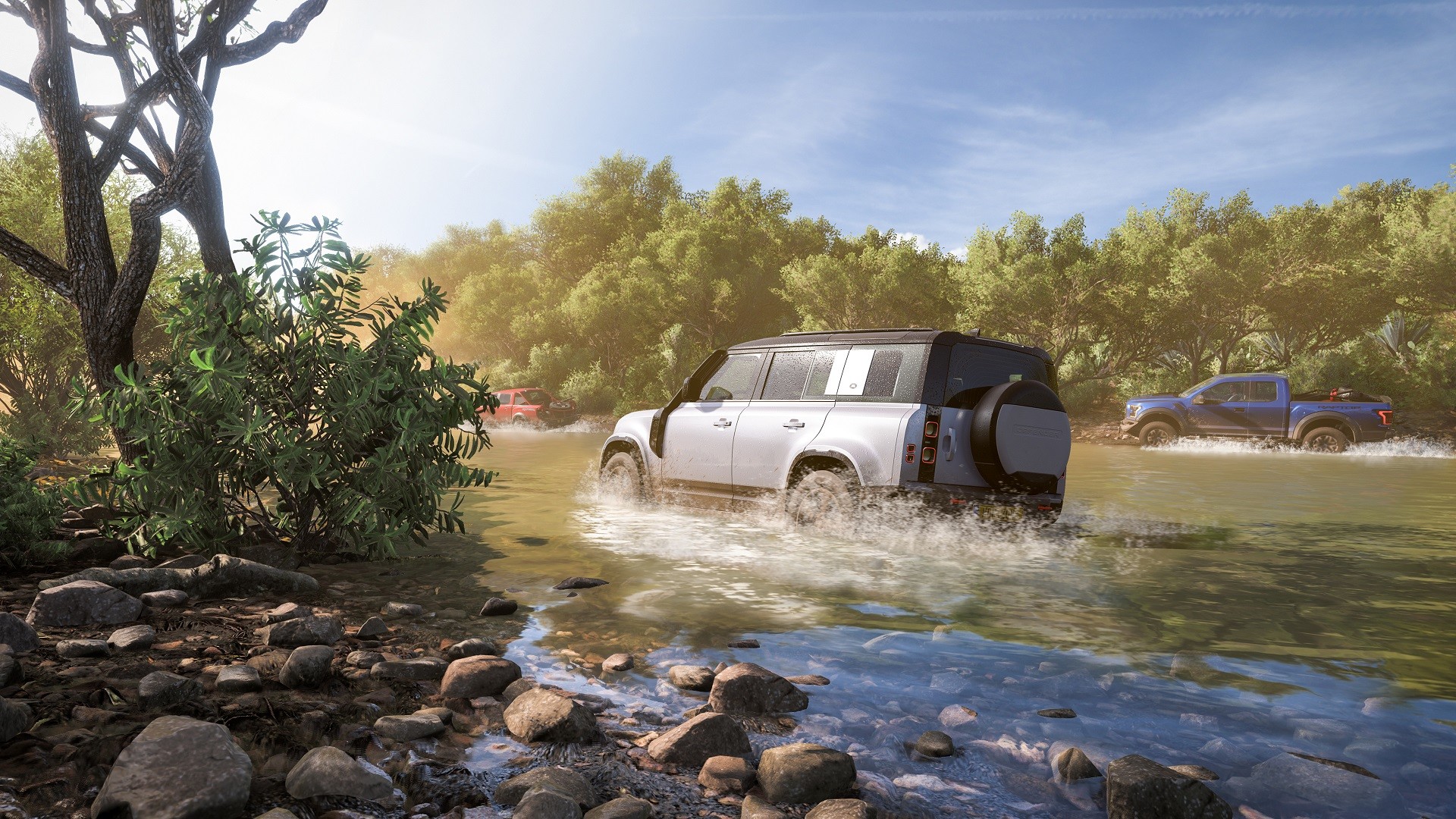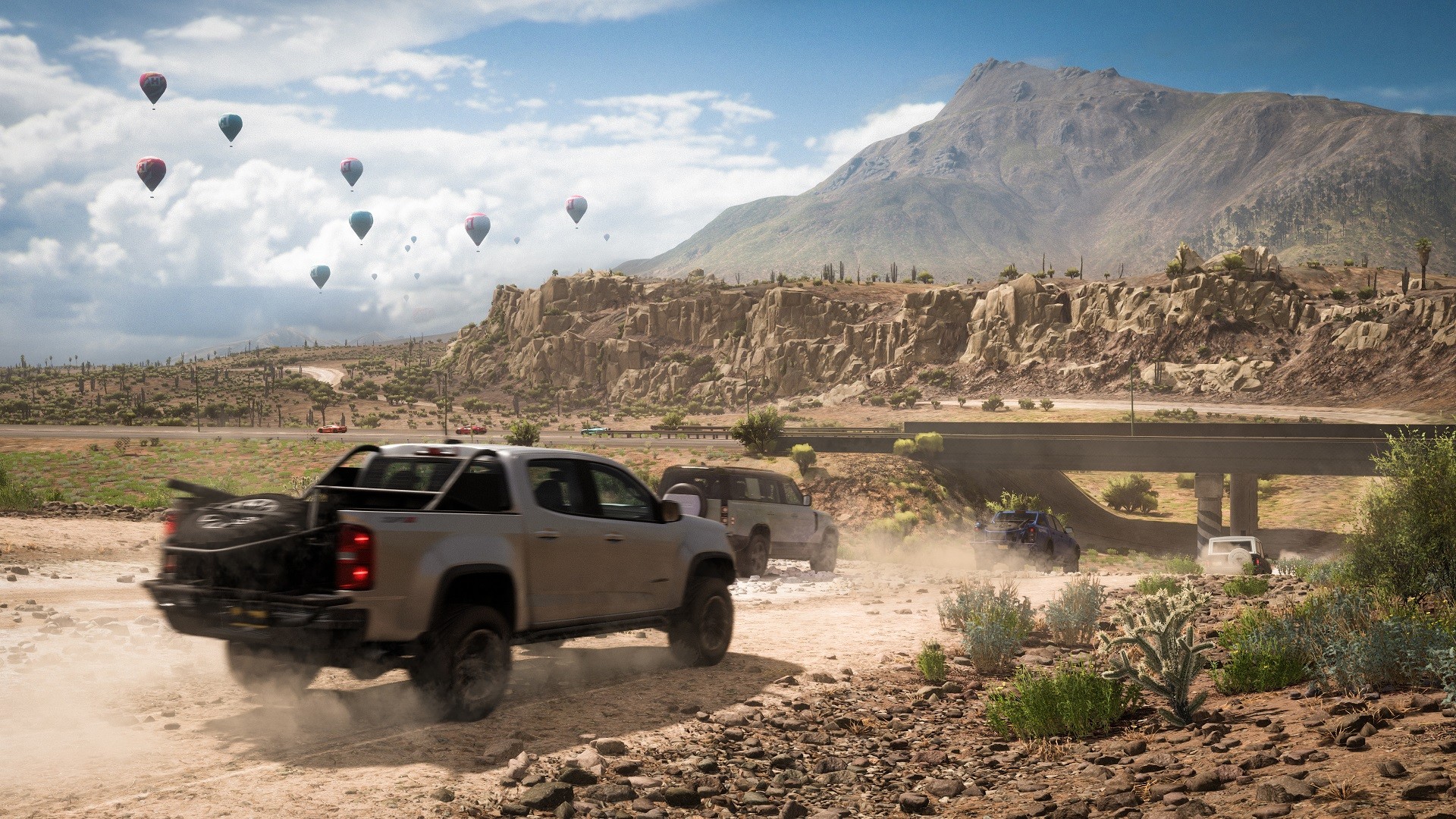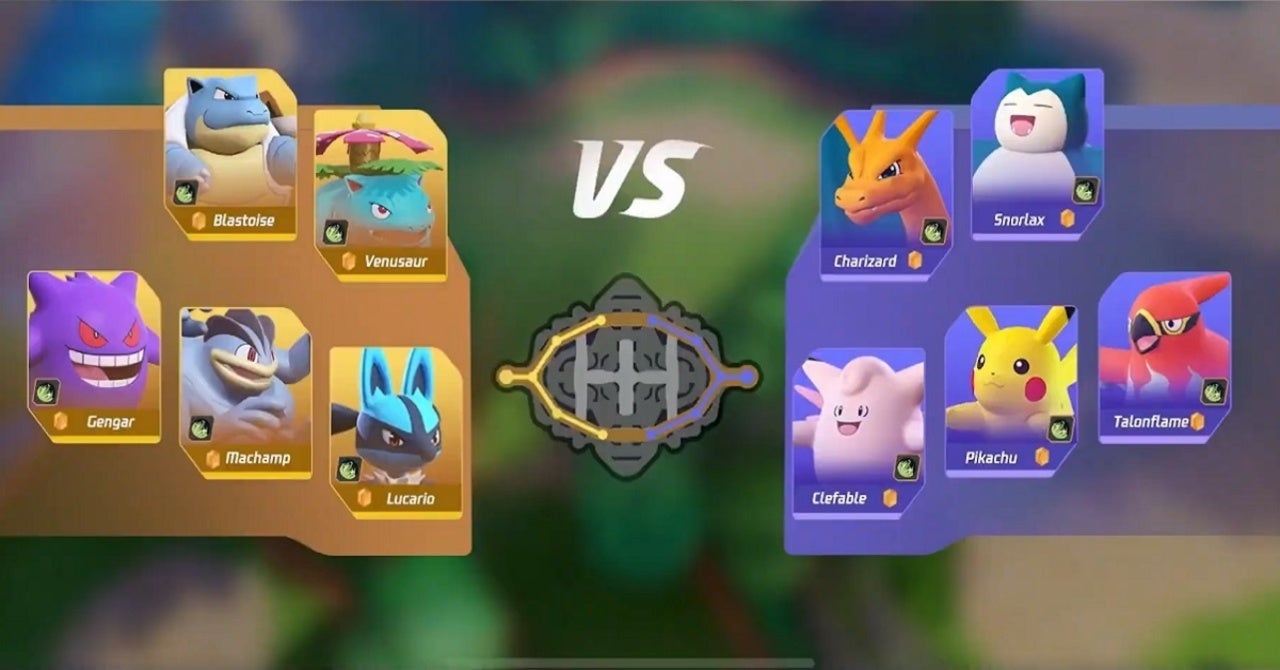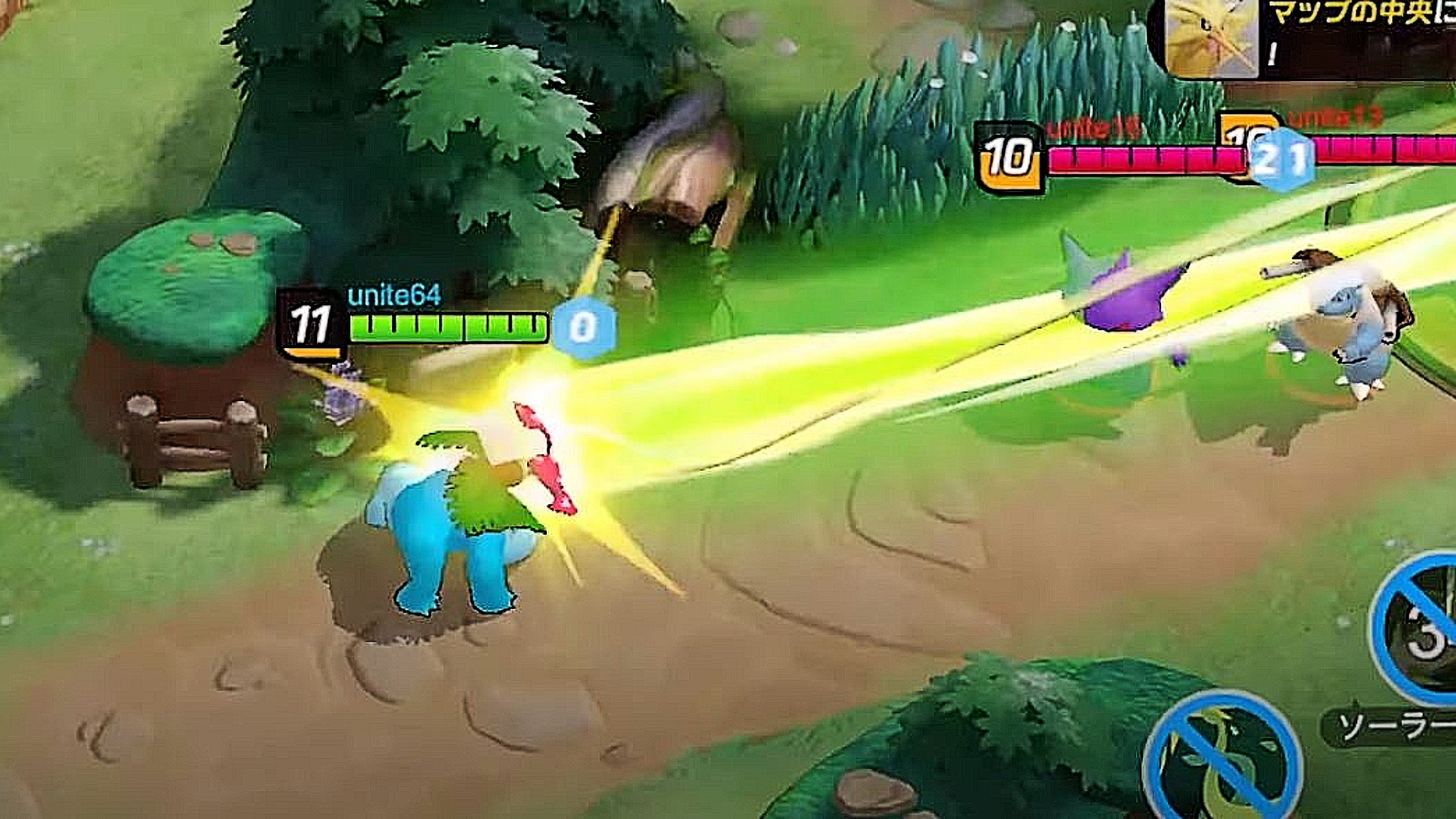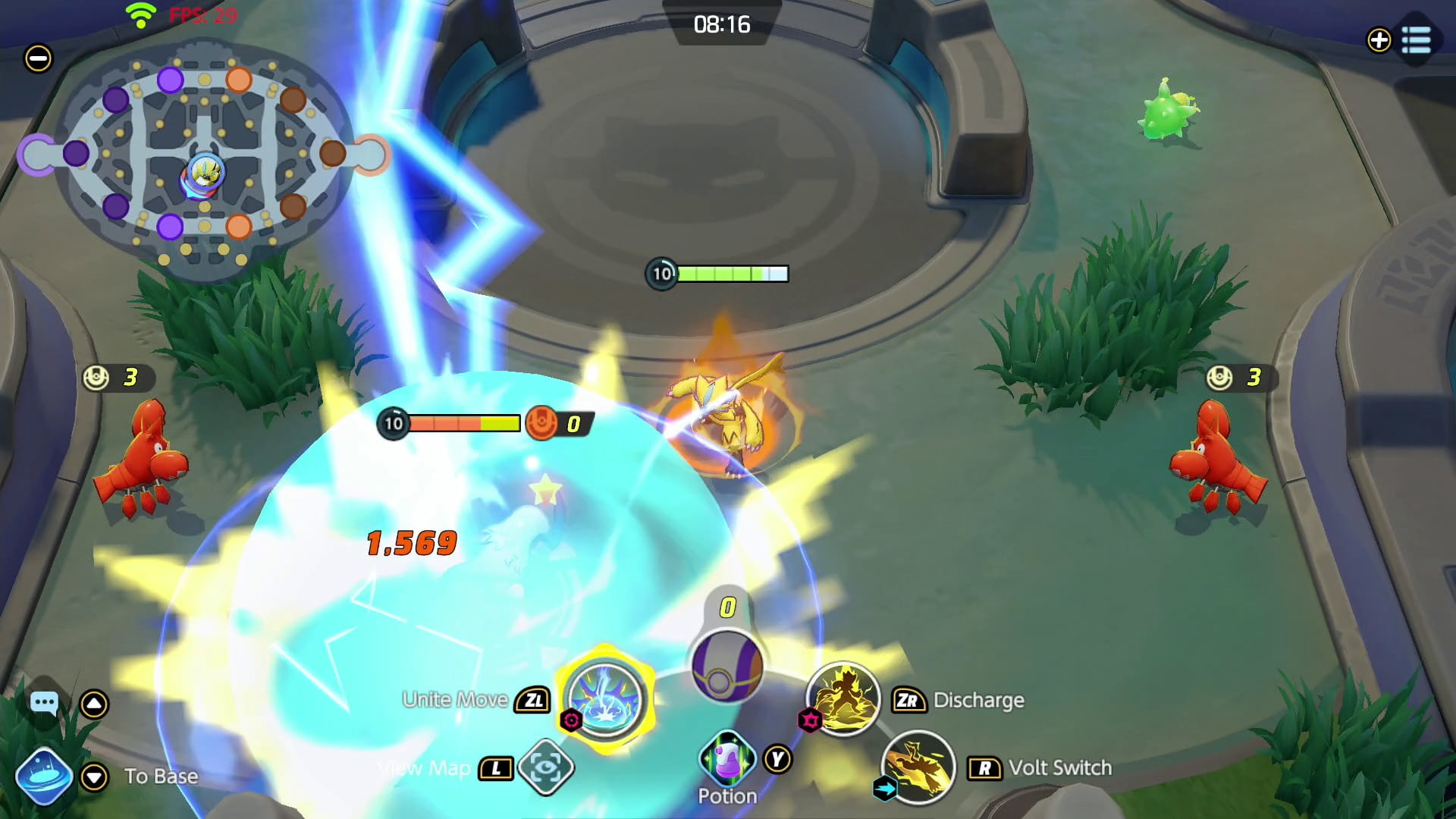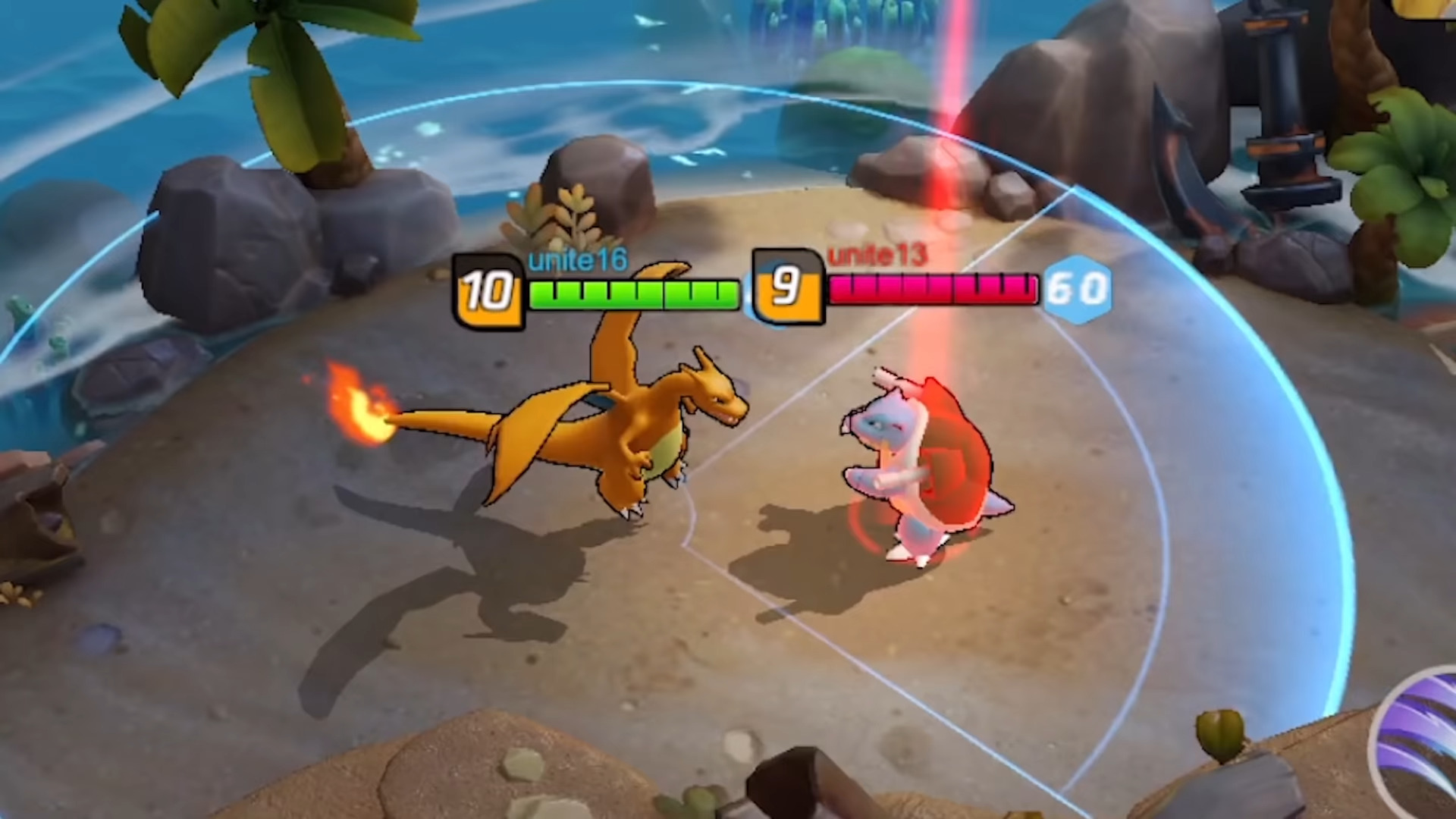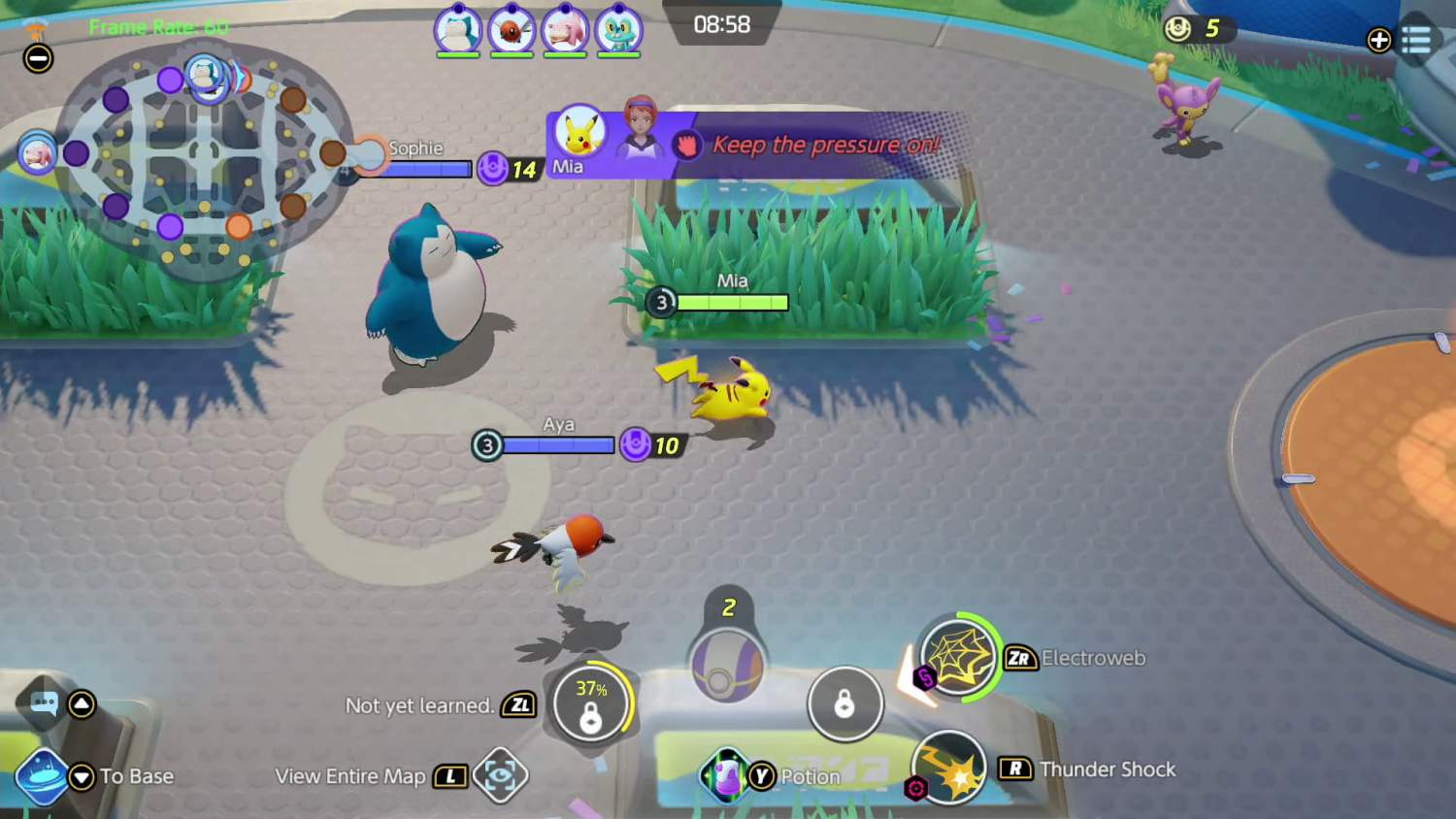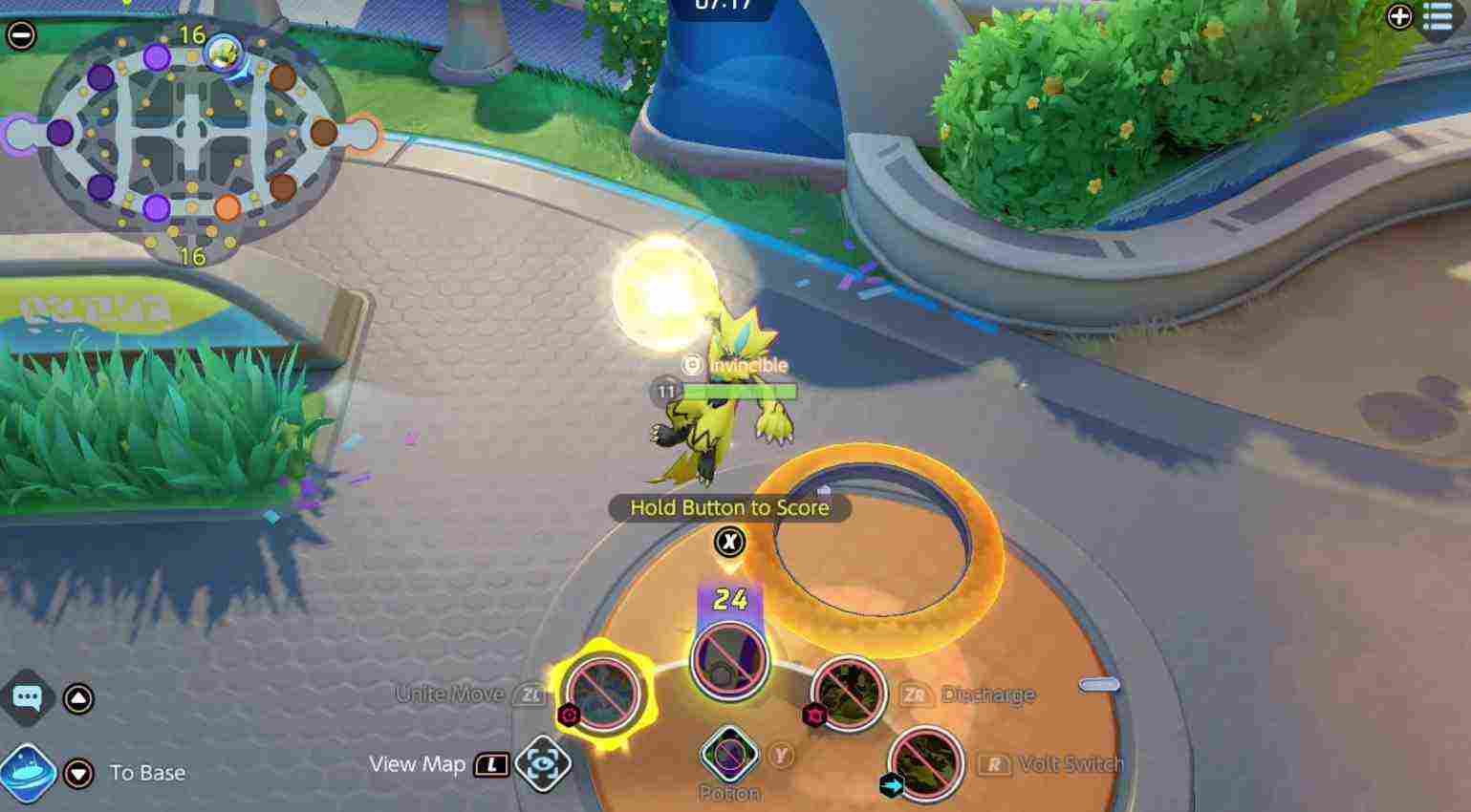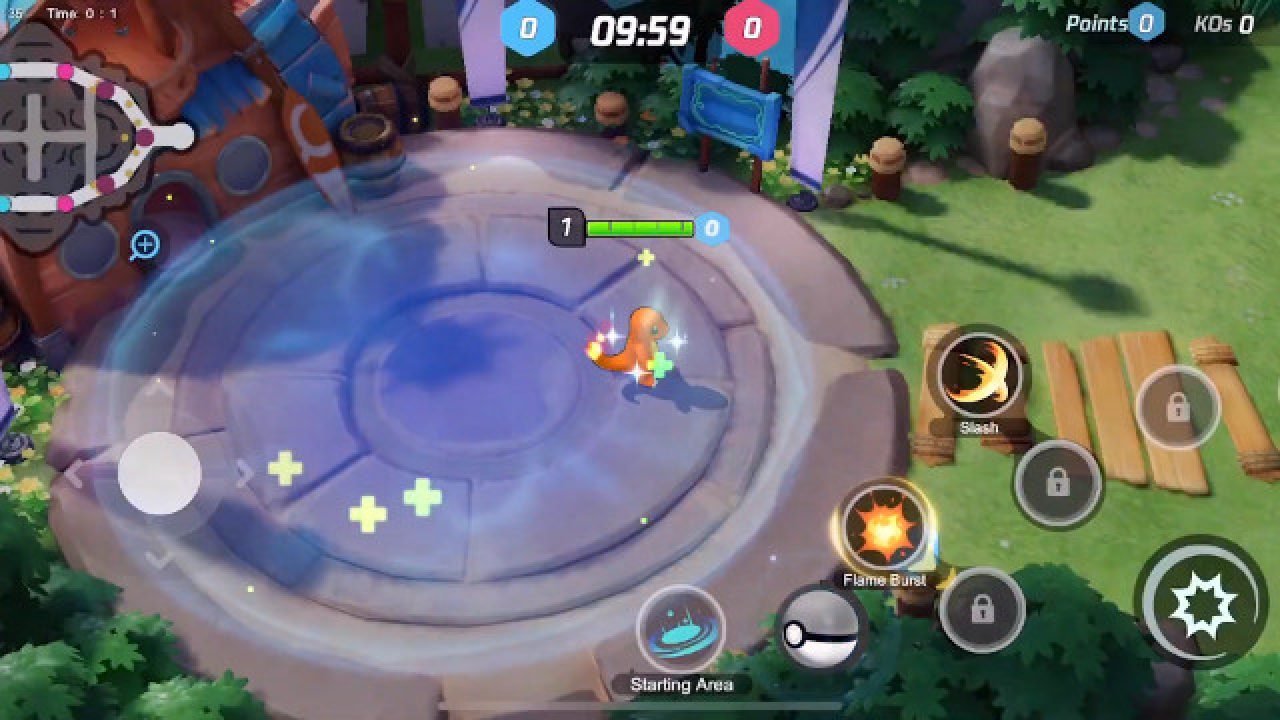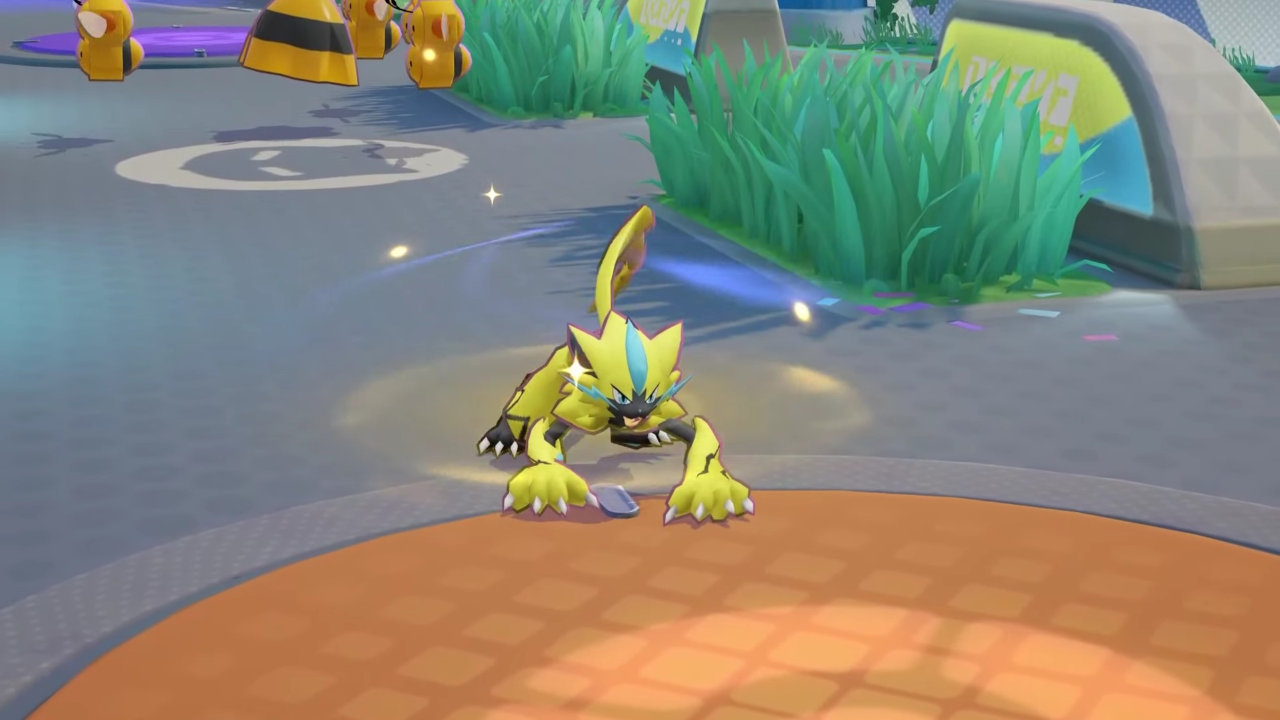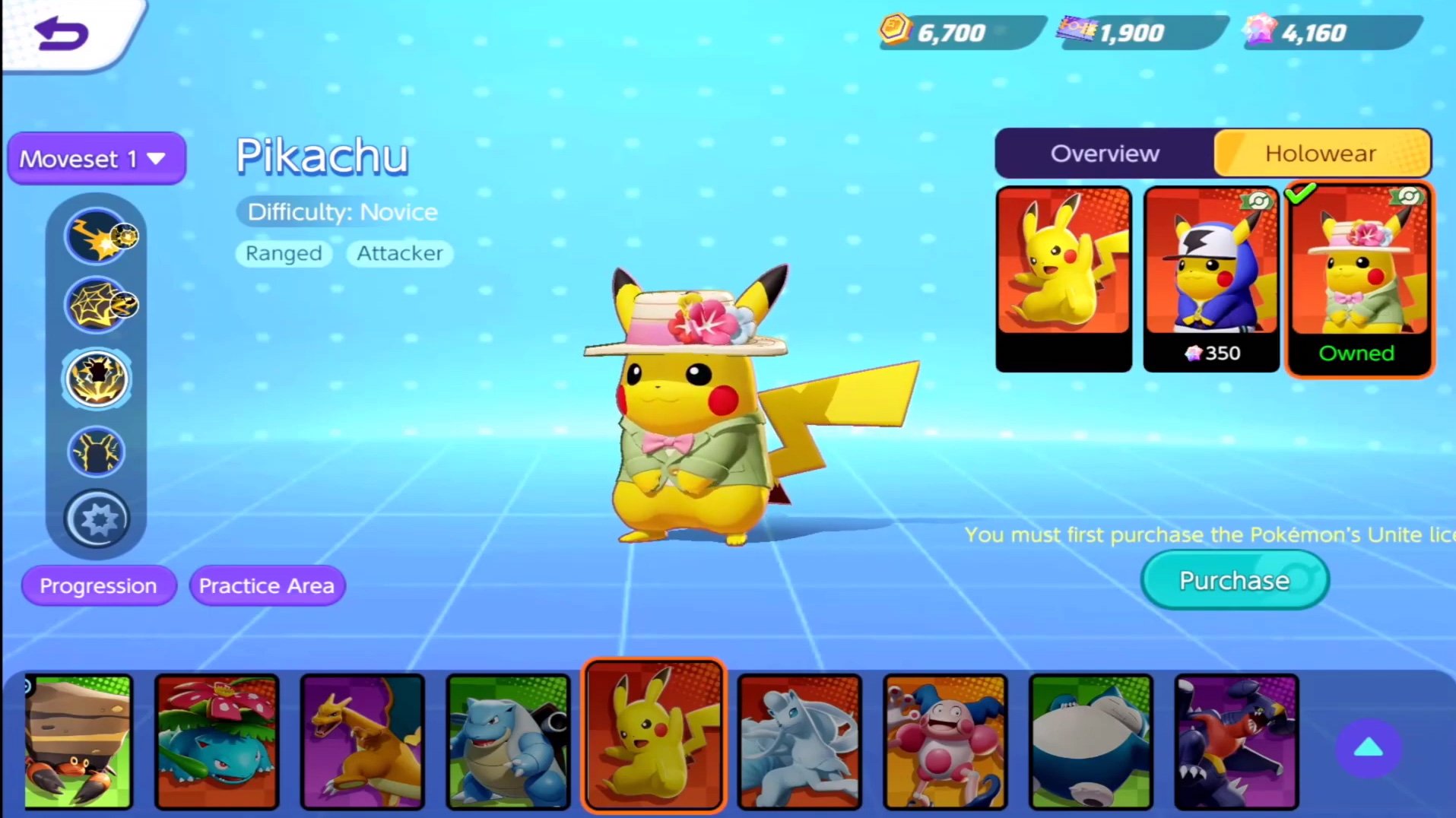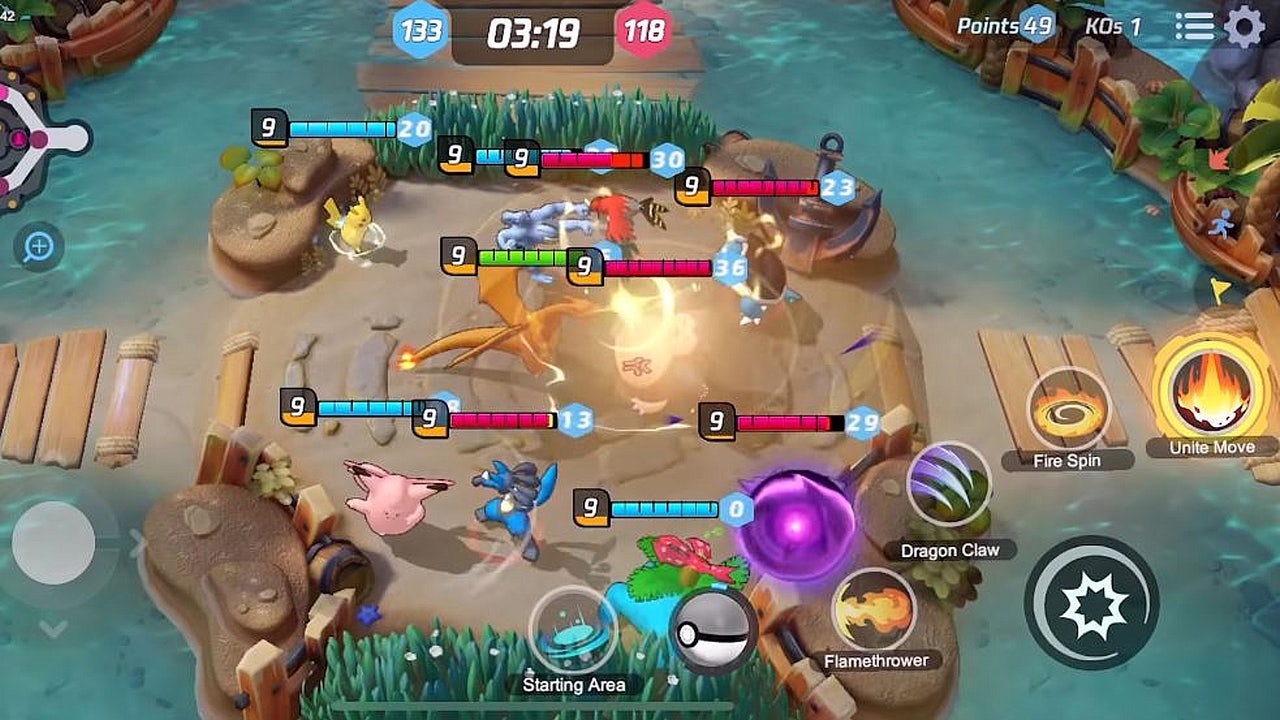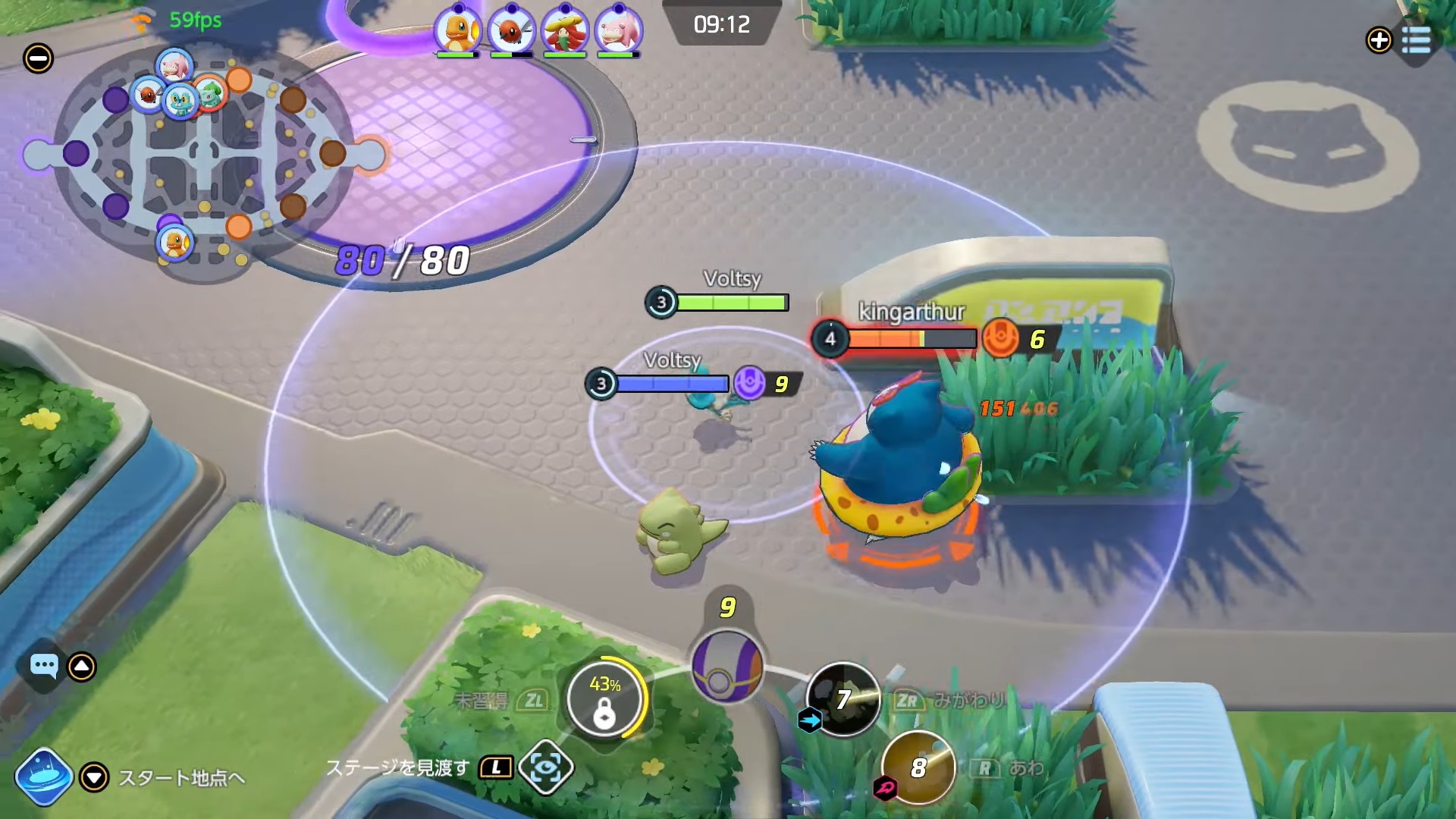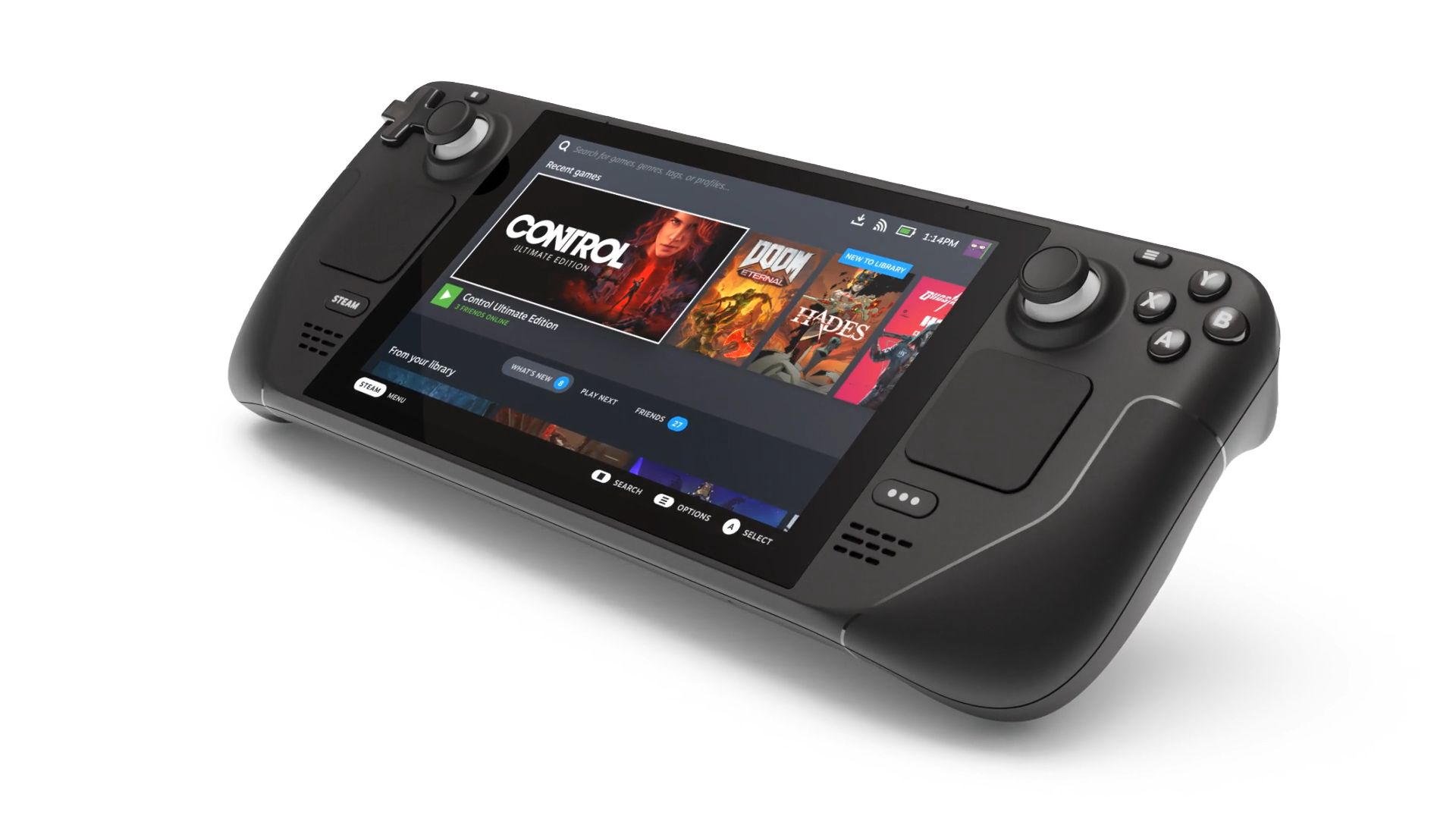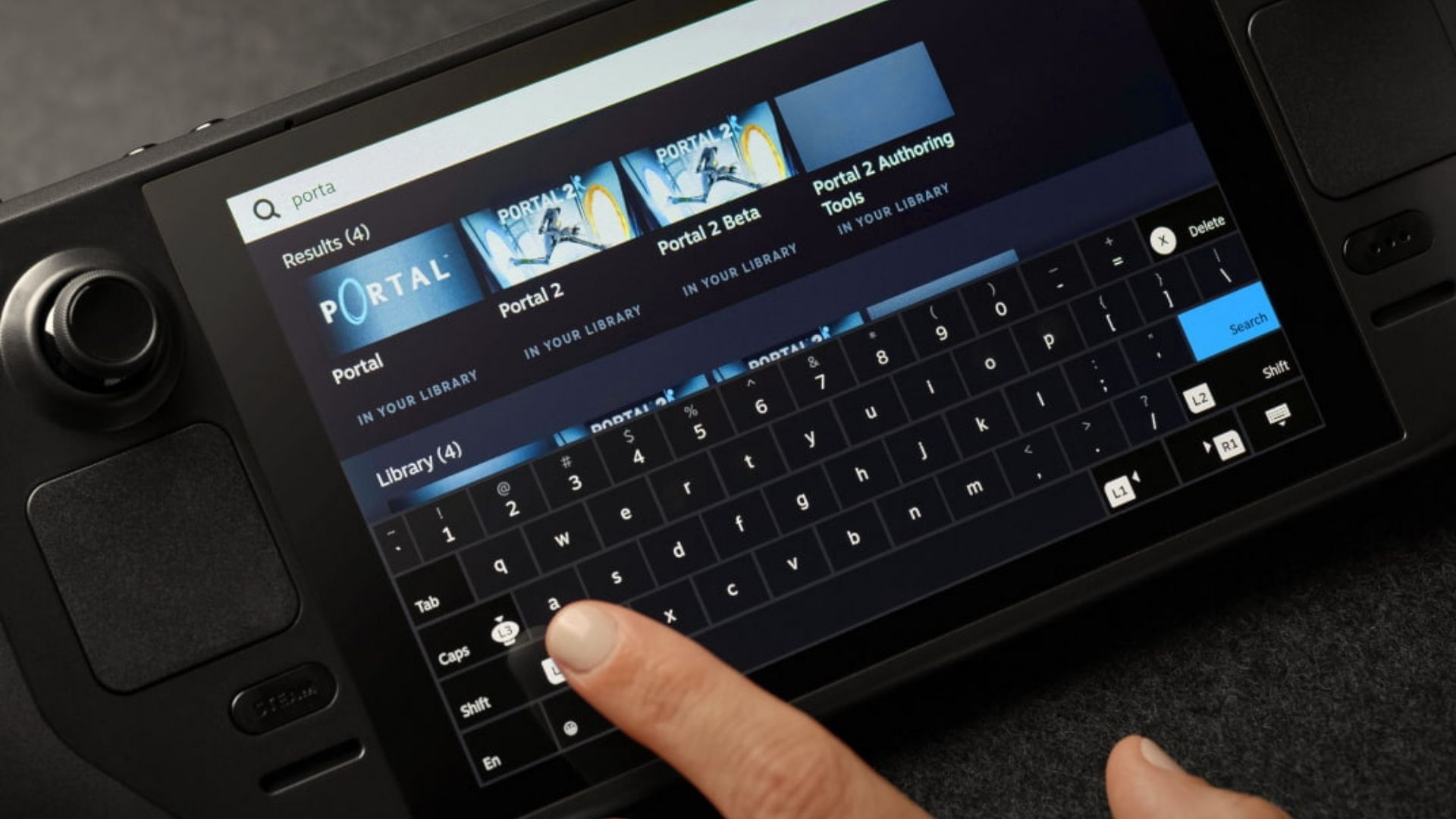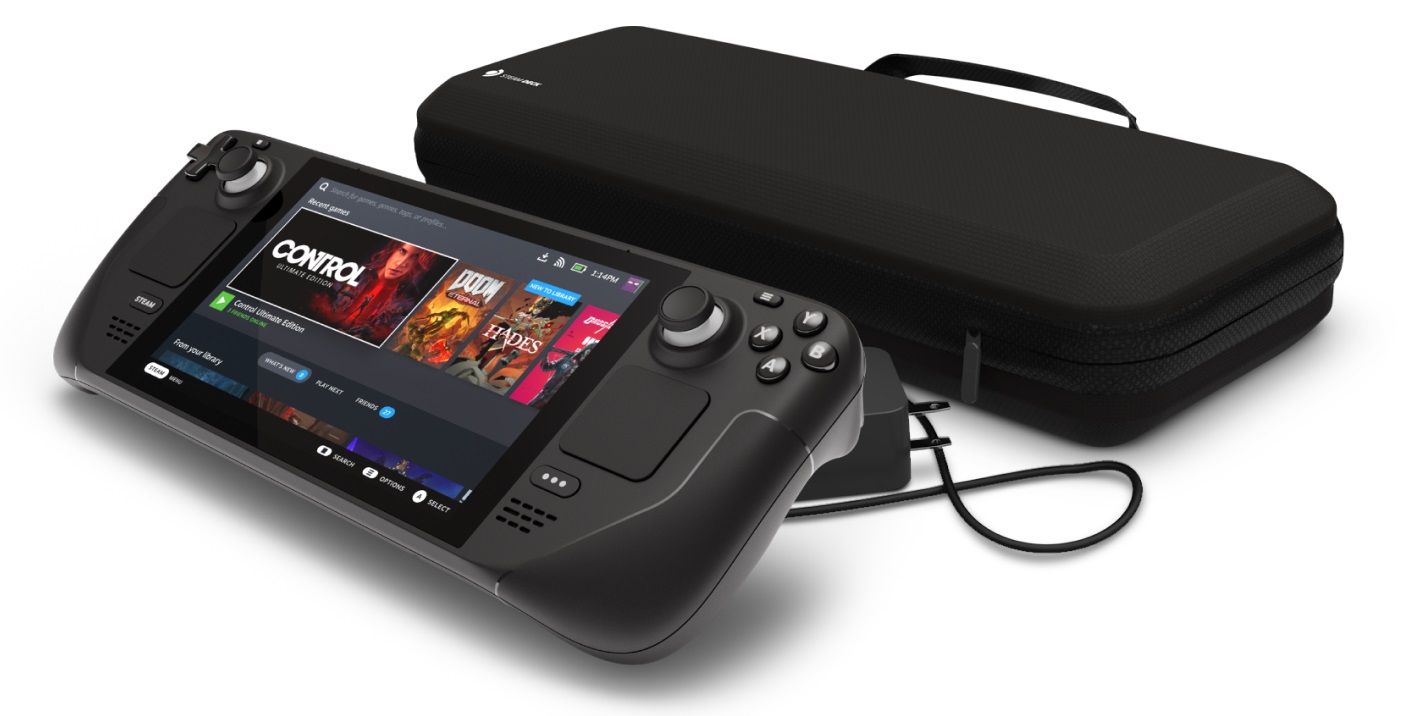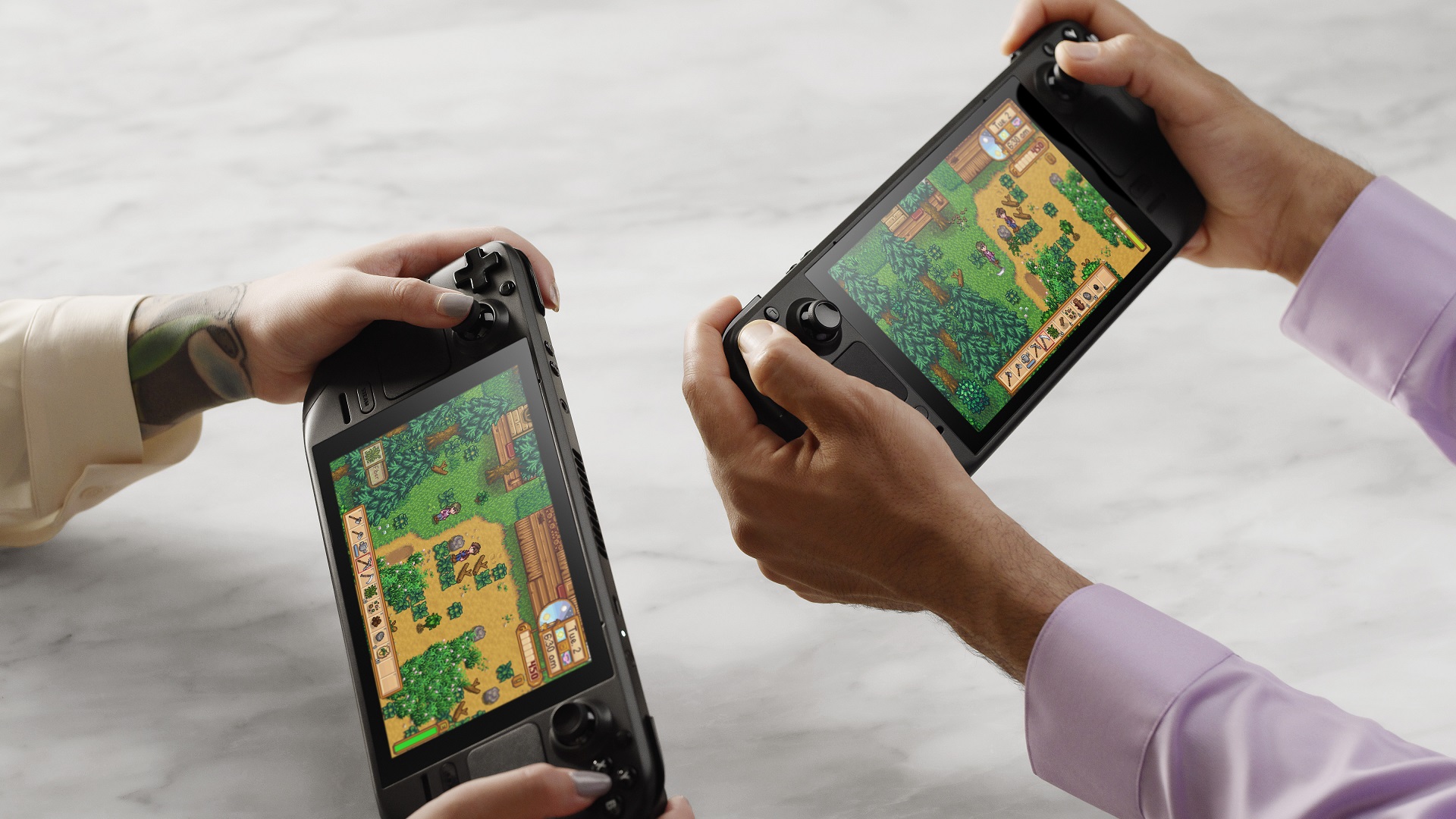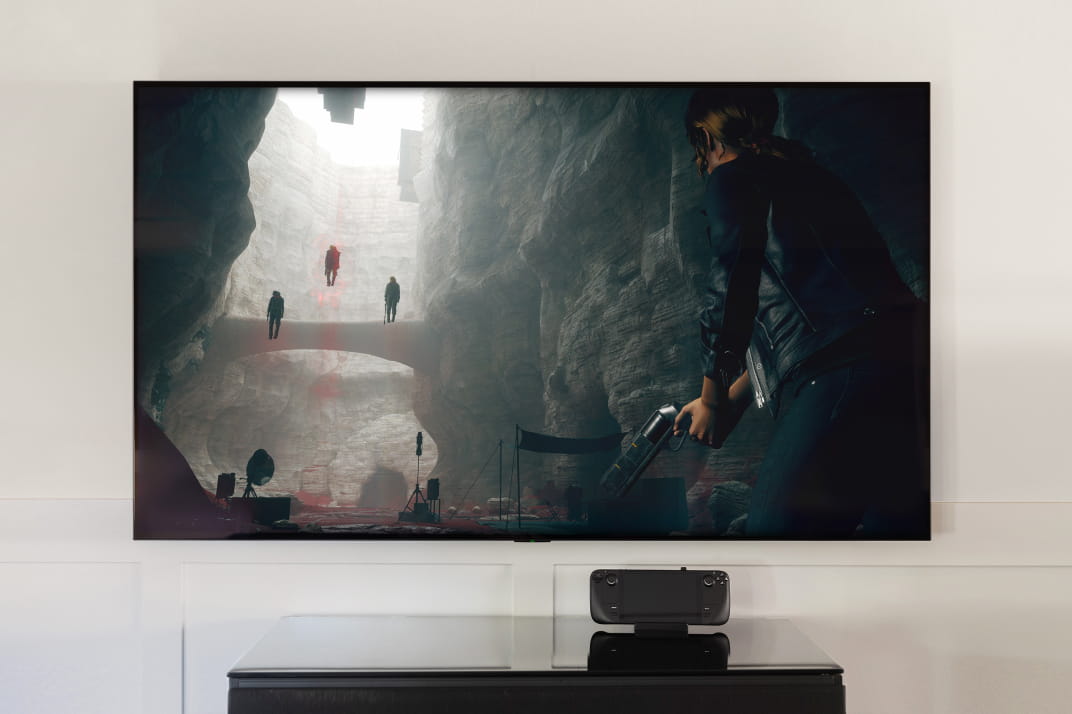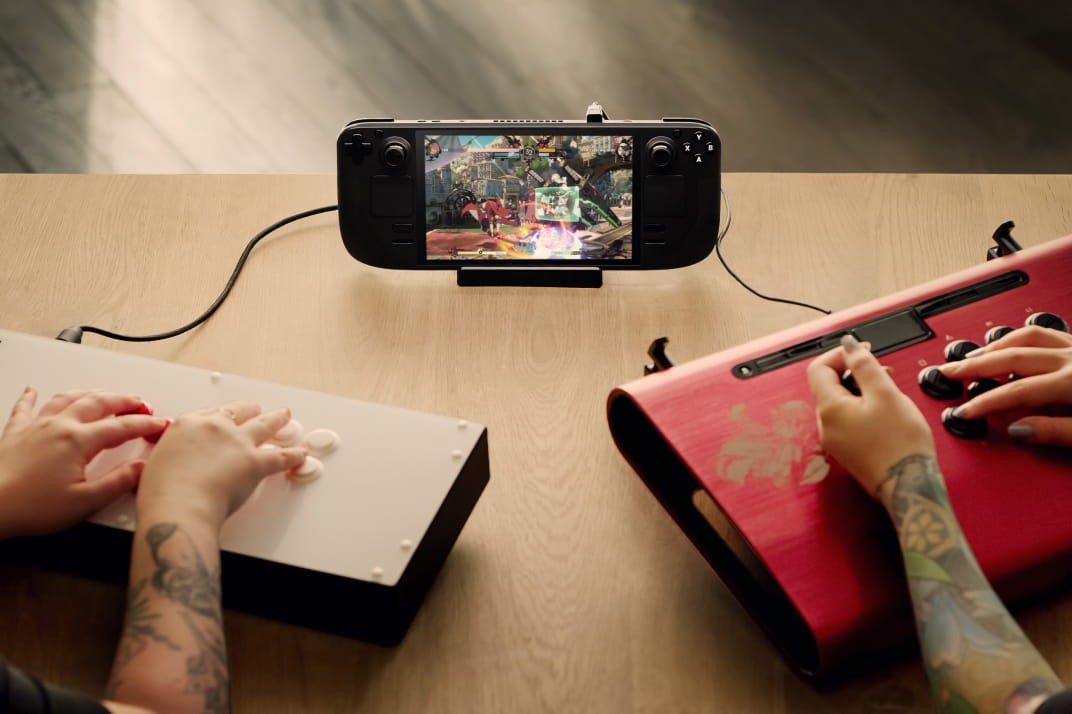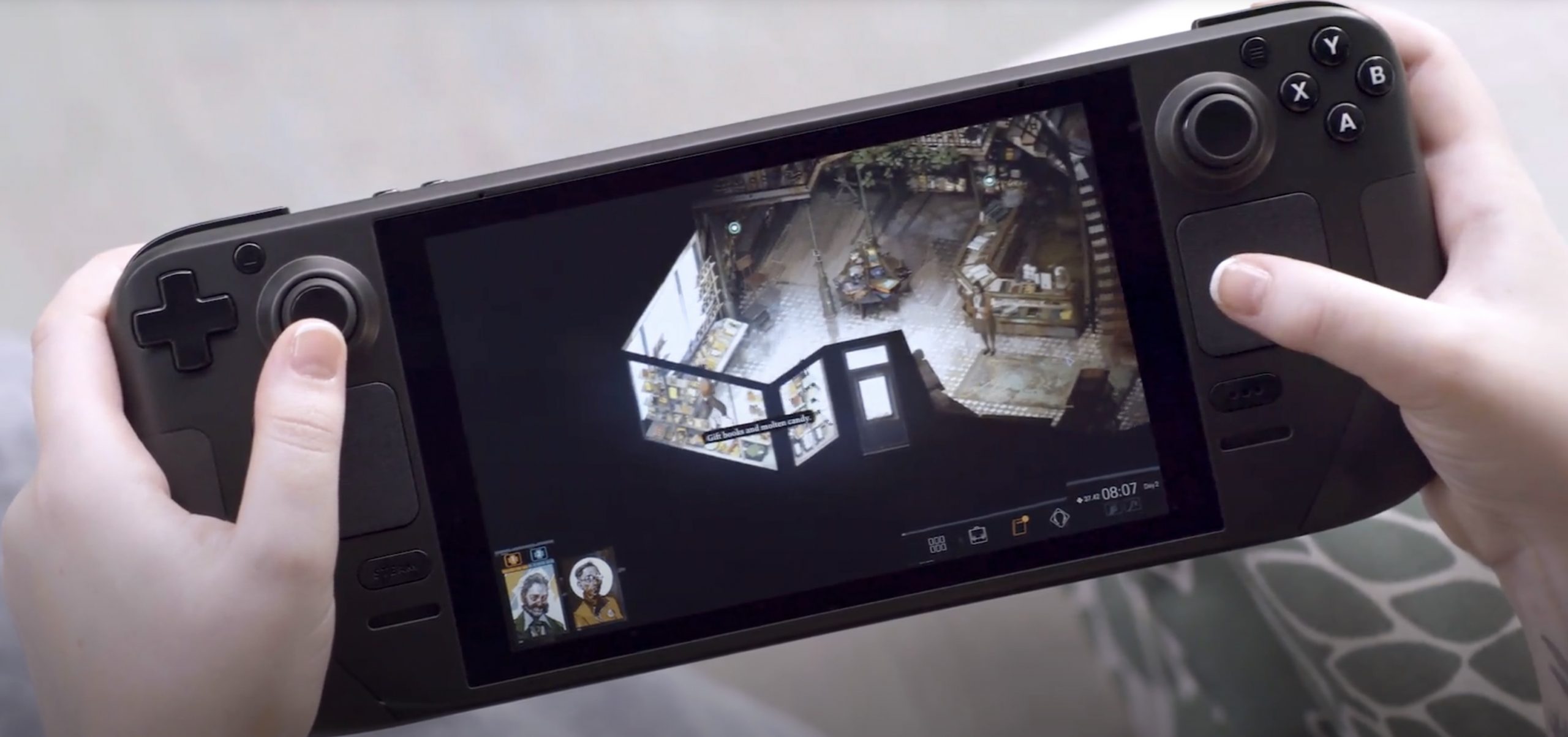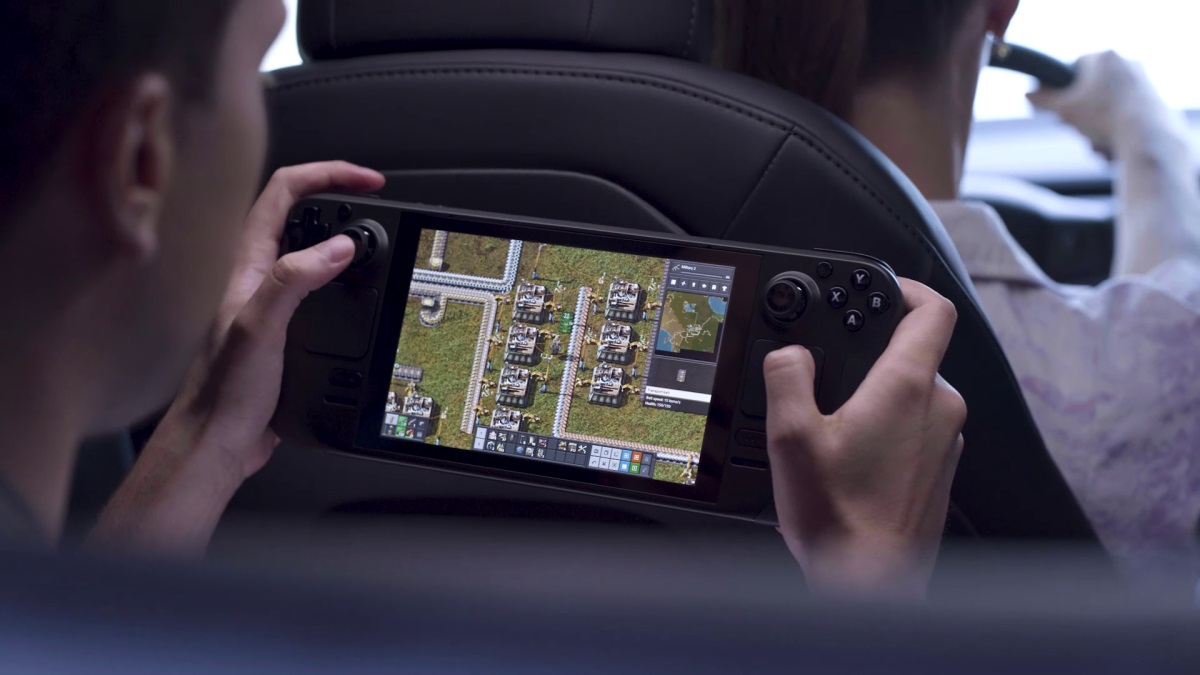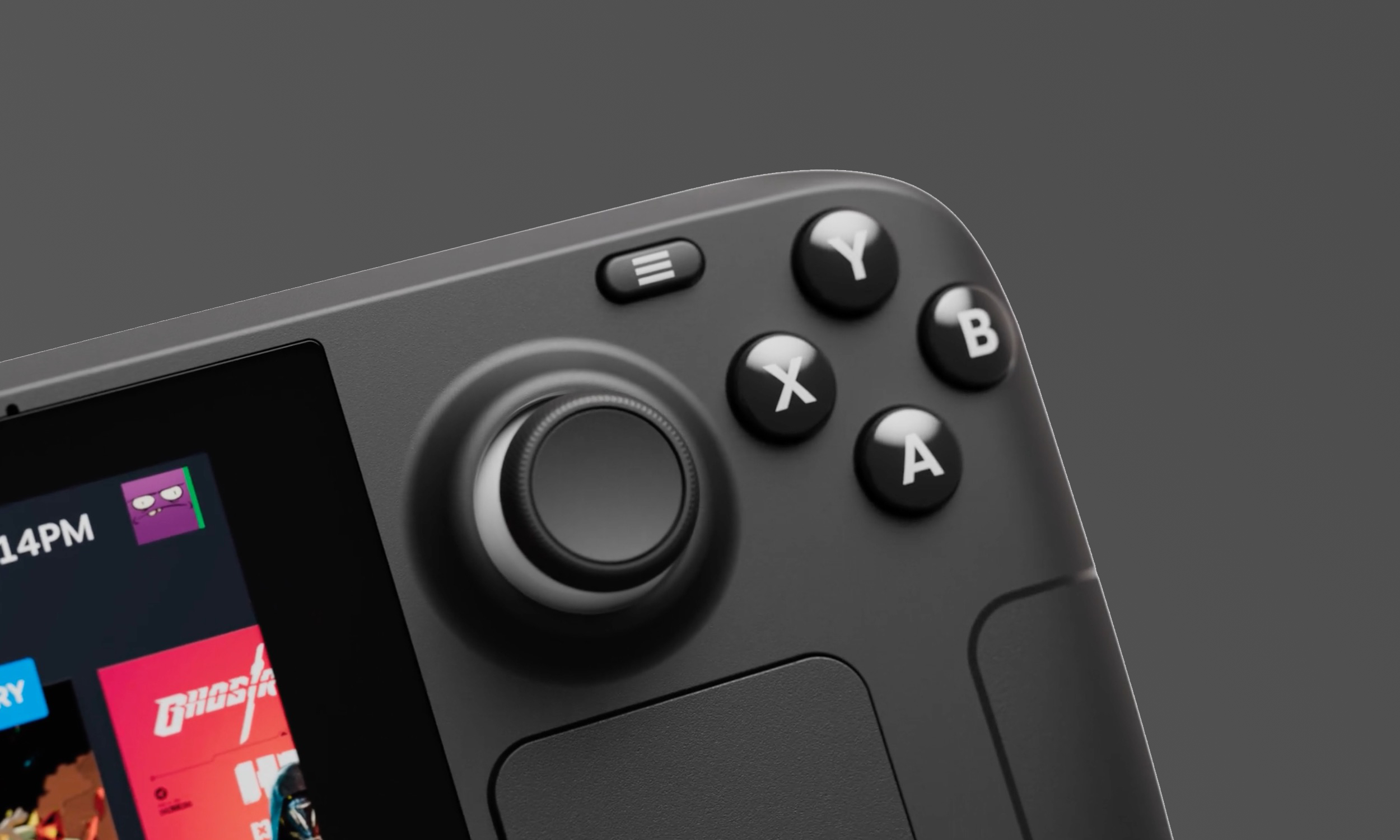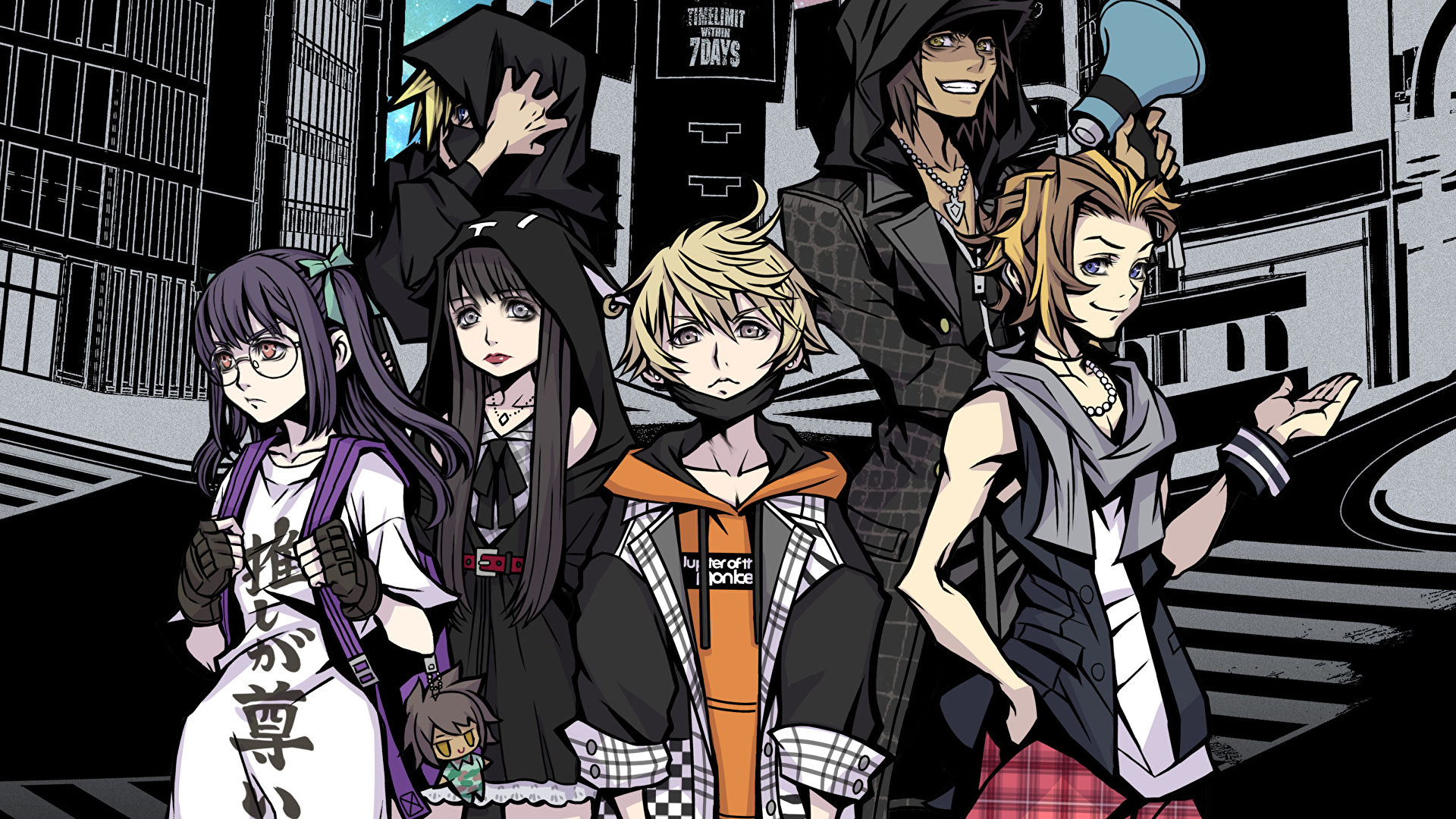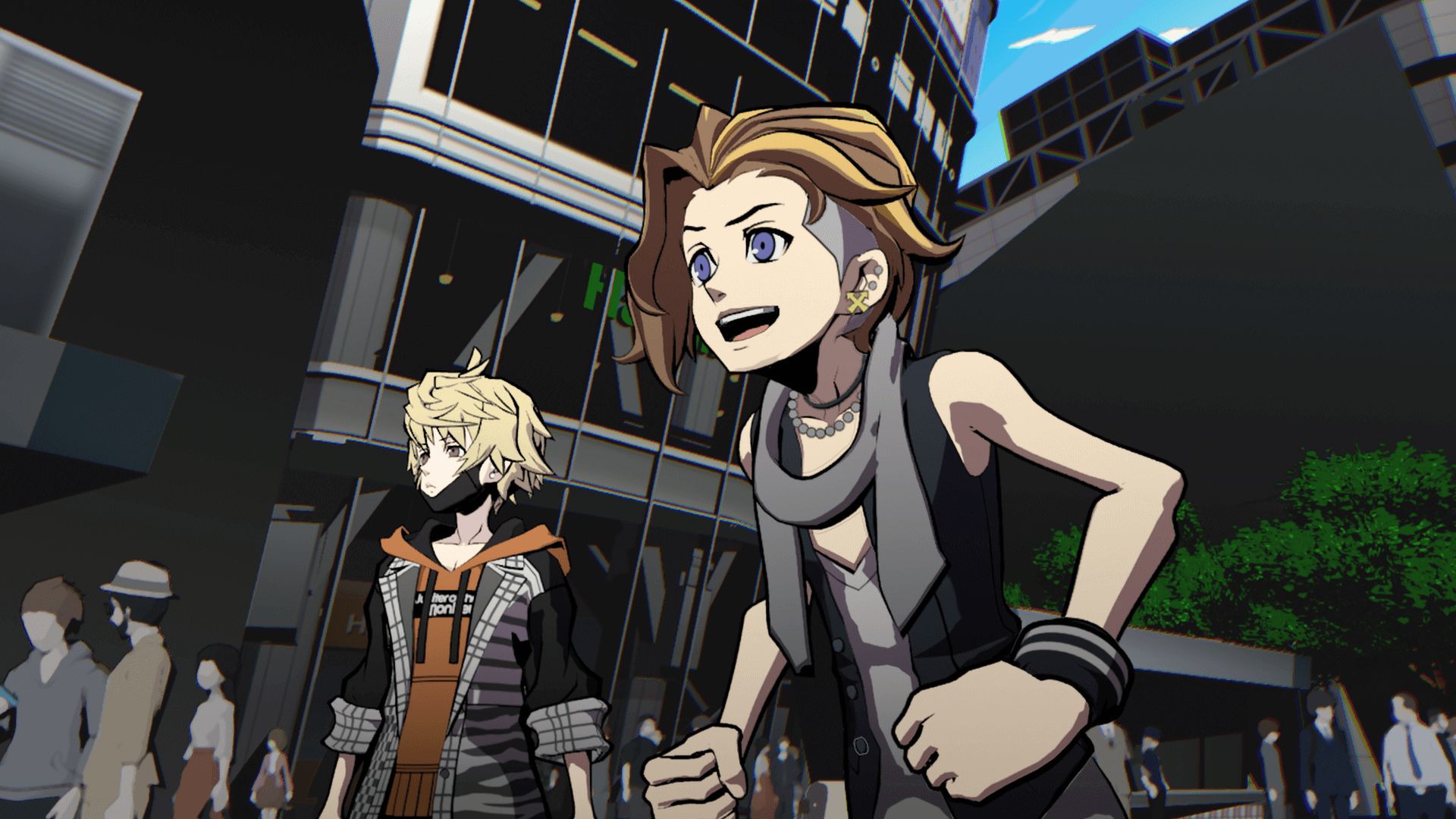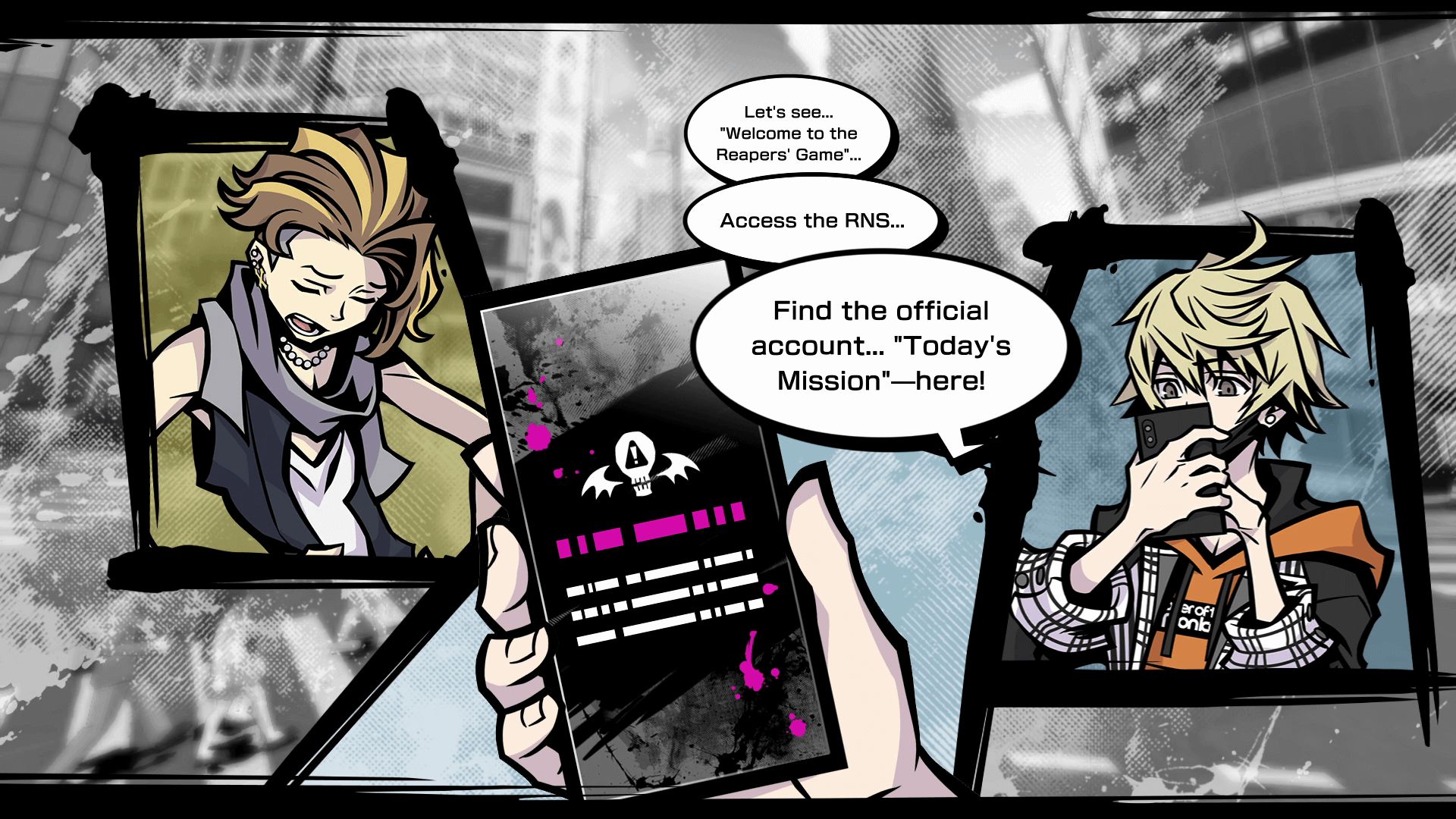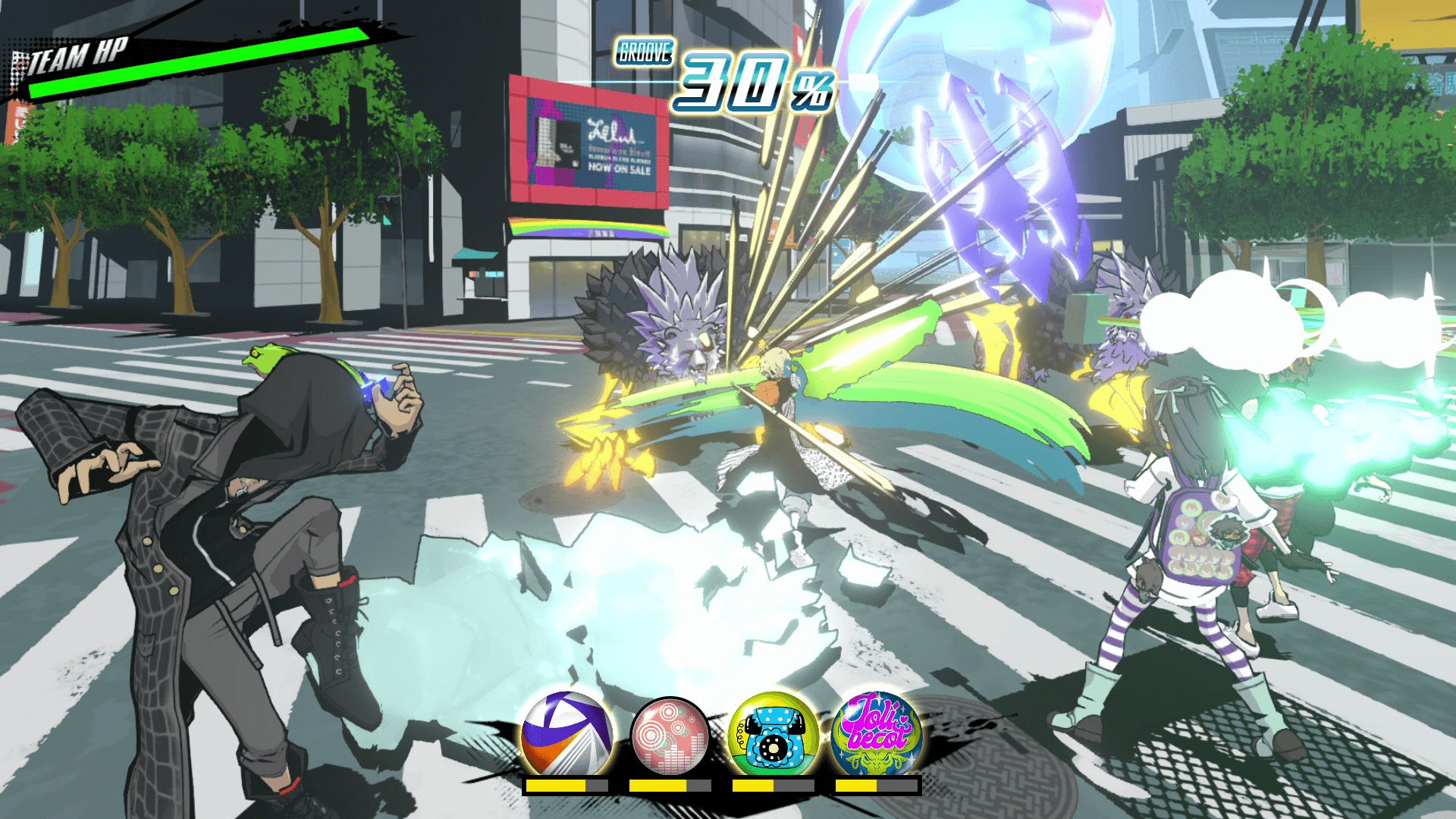Warframe Confirms Cross-Play and Cross-Saves are in the Works
Pretty much every multiplayer game out there is better when it supports cross-platform play, but when a game has a massive player base and can be played across multiple platforms, it more or less becomes a necessity. The widely popular and universally beloved looter shooter action RPG Warframe is definitely one such game, and soon, it's going to take that significant step.
Developer Digital Extremes has confirmed that cross-play and cross-saves for Warframe are currently in development, which means you'll be able to play with and against anyone on any platform, and that you'll be able take your progress across platforms to play wherever you want. The developer hasn't shared a timeframe for when these features will be coming to the game.
Meanwhile, it's also been confirmed that a dedicated iOS and Android port of Warframe is also in the works. That, too, doesn't have a launch window just yet.
Warframe is available on PS5, Xbox Series X/S, PS4, Xbox One, Nintendo Switch, and PC.
Play anywhere. With anyone.
Cross Play and Cross Save are coming to #Warframe on all platforms, including mobile.
Officially in development. pic.twitter.com/JtjyeuWbBC
— WARFRAME (@PlayWarframe) July 17, 2021
Nintendo Denies Claims About Higher Profit Margins for Switch OLED
A recent report claimed that the manufacturing cost for a Switch OLED for Nintendo is just $10 higher than a base Switch, which in turn means a profit margin of $40 for every unit of the Switch OLED sold (which will retail for $349.99 as opposed to the $299.99 price of a regular Switch model). Nintendo has denied these claims.
In recently published tweets, the Japanese company called these claims incorrect in order to "ensure correct understanding among [their] investors and customers." Meanwhile, Nintendo also says that right now, it has no plans for launching any other Switch model. Reports of a 4K-ready Switch Pro had been abundant prior to the Switch OLED's announcement, but have persisted even afterward.
The Nintendo Switch OLED launches on October 8. It will have the same CPU and RAM as the base Nintendo Switch and use the same Joy-Cons, but will come with a new and improved dock (which can also be purchased separately).
We also want to clarify that we just announced that Nintendo Switch(OLED Model) will launch in October, 2021, and have no plans for launching any other model at this time. (2/2)
— 任天堂株式会社(企業広報・IR) (@NintendoCoLtd) July 19, 2021
Forza Horizon 5 is an Impressive Xbox Series X Visual Showcase in Spite of Being Cross-Gen
The Forza Horizon series has always been about great cars, great visuals, and great open world settings. Since the original launched on the Xbox 360, Horizon's turned into Microsoft's flagship racing franchise. Where Sony's Gran Turismo focuses on simulation-level accuracy, Forza Horizon doubles down on the fun. It's about racing fast cars and having a good time. With the arrival of the ninth-gen Xbox Series X and Series S, Playground Games had the opportunity to dial things up a few notches in terms of visuals, scope, and scale. Forza Horizon 5 is a cross-gen game, meaning it has to scale down to the base Xbox One S. However, take a look at footage on the top-end Xbox Series X version and you wouldn't be able to tell. This is a jaw dropping, photorealistic ninth-gen showcase, with incredibly detailed vehicles and some of the best foliage rendering we've seen. This truly looks insane. Let's take a deep dive to understand how Playground Games managed to deliver a scalable ninth-gen experience and the visual features that help make Forza Horizon 5 such a graphics powerhouse.
Minimal ray-tracing, where it counts
Forza Horizon 5 will not feature ray-tracing during regular gameplay. This is a bit of a bummer. However, the bright exterior environment with high roughness surfaces like dirt and foliage isn't exactly the best showcase for features like ray-traced reflections.
Instead, Playground games decided to deploy ray-tracing where it would the most: up close and personal in the Forzavista model viewer. Forzavista is a separate mode where players can view in-game vehicle models at their highest level of detail. Top LODs in Forza can hit the six figures – we'll get to this later – which means Forzavista offers incredibly detailed close-up views. Adding ray-tracing to the mix will take things to the next level – glossy and metallic car surfaces will showcase higher quality and more accurate reflections than we've seen in a Forza game till date, taking these cars even close to photorealism.
The lack of in-game ray-tracing is a bit of a missed opportunity, since Gran Turismo 7 on PS5 is set to implement this feature. However, this is one of those cases where ray-tracing alone doesn't define a game's visuals.
Up against Gran Turismo 7, Forza Horizon 5 looks fantastic and we don't hold this omission against Playground.
Incredibly high asset quality
Great looking cars and great looking environments have always been a strong suit for the Forza series. In Forza Horizon 5, we see this trend continue. Individual car models are made up of hundreds of thousands of polygons. This means there's a good degree of high frequency detail on the insides and out. One area where previous generation racing games fell a bit short was in terms of environmental rendering.
This makes sense: most of the polygon budget was dedicated to getting the best-possible car models onscreen. But this often meant that trees, foliage and buildings in the background didn't look quite as good. Forza Horizon 5 leverages the power of the ninth-gen consoles to delivered uncompromised environmental rendering. Forests, grasslands, and other areas that often challenged earlier Forza games look spectacular here and on par with many AAA open world FPS and TPS titles. That Playground is able to manage this while maintaining spectacularly high cad asset quality is a testament to optimized code and the power of new hardware.
Materials are a real area of strength. Forza Horizon 5 features physically-based material rendering and very high resolution textures. The way that light interacts just right with a car exterior or the way that leather interiors are presented contribute greatly to the visual makeup. One interesting thing to note is that texture quality is very high across the board – not just on cars but in exteriors as well, leveraging the Xbox Series X's higher VRAM allocation.
Lighting and additional effects
Forza Horizon 5 doesn't utilize ray-traced lighting, as mentioned. However, Playground has deployed a very accomplished raster-based global illumination implementation technique. We see great use of volumetrics as well, properly conveying the dusty Mexican environs.
We see good use of a number of screen space effects, including parallax occlusion mapping to add depth to rocks and incidentals, and high fidelity ambient occlusion, adding in shade in nooks and cranny below and around vehicles. The trailer also showcases a high sample count motion blur implementation, providing a visceral sense of speed.
Conclusion
Since their launch several months ago, both the PlayStation 5 and Xbox Series X/S have been consoles in search of games. The prevalence of cross-gen AAA titles fundamentally restricts what developers can achieve on these machines. Forza Horizon 5 is a cross-gen game. But Playground's intelligent use of its highly scalable engine means that the top end Xbox Series X/S and PC versions look, at the very least, like something that wouldn't be out of place in a ninth-gen exclusive. Despite being cross-gen, this is a great visual showcase for the Series X. We're very interested to see how it'll stack up to future ninth-gen exclusive Forza titles.
Pokémon UNITE – 13 Things You Need To Know
Not long from now, we're going to get to play two major mainline Pokemon games in quick succession when Pokemon Brilliant Diamond and Shining Pearl and Pokemon Legends: Arceus launch in the space of around two months. Before that happens though, Pokemon still has some more stuff on offer, and soon, will be delivering Pokemon Unite. And as its launch approaches, here, we're going to talk about the most crucial details you should know about the game.
WHAT EVEN IS IT?
Pokemon might be a role playing series, first and foremost, but over the years, with countless spinoffs, it's tried its hand at various other genres, from fighting games to dungeon crawlers to turn-based strategy RPGs and more. With Pokemon Unite, it's branching out once again, which is a free to start MOBA. Expect real-time strategy-lite battles, and with the game being a free to start battle, also be prepared for significant monetization.
MATCHES
So here's the big question- how exactly are matches going to be structured in Pokemon Unite? Each match will see two teams of five players each going up against each other, and each team's goal is to score more points than the other before the match's time runs out. You score points by moving to one of several control points scattered throughout the map, and will level up and become more powerful as the match progresses.
MOVES AND ITEMS
Before the beginning of each match, you will select which Pokemon you want to play as, on the basis of their unique attributes and what moves they can potentially learn. Interestingly enough, you'll also be selecting the moves that your Pokemon can potentially learn, as well as the items they can hold during battles, and both those things will, as you can imagine, have a significant impact on how you strategize- so make those decisions wisely.
WILD POKEMON
Since this is, of course, a PvP game, it goes without saying that opposing players will pose the biggest threat to you- but they won't be the only threat. Also found in abundance across the map in each match are wild Pokemon, which you'll fight and defeat to level up, grow more powerful, and learn new moves. Interestingly enough, the game also has legendary wild Pokemon, which promises to throw an interesting wrench into how matches progress.
AEOS
So, we know about how matches in Pokemon Unite are structured, and we know about wild Pokemon in the game- put together, that tells us exactly how to win a match. Each time you defeat an enemy Pokemon – be it wild or otherwise – they drop Aeos, and it is by taking this energy into opponents' goal zones that you score points. Clearly, then, working with teammates to try and break past enemy defences and putting up your own defences around goal zones is going to be key in Pokemon Unite.
EVOLUTIONS
Of course, evolutions are a crucial part of any Pokemon experience, and they will have a role to play in Pokemon Unite as well. Though you will start each match with a low level unevolved Pokemon, battling against opponents and wild Pokemon will help your own Pokemon become more powerful, which means that the Pokemon you begin a match with can evolve as well. Evolutions are temporary, but will make you much more formidable on the battlefield, so use them wisely.
TYPES
Another hallmark of the Pokemon franchise is types and type matchups, and the rock-paper-scizzors style strengths and weaknesses that different Pokemon and move types pose to each other can often be a crucial part of any fight's strategy. Sadly, that's not going to be the case in Pokemon Unite, with it having been confirmed that there are no type-based strengths and weaknesses in the game.
UNITE MOVES
Each Pokemon will also come equipped with a Unite move- which, as you may have figured out, is essentially an ultimate. Unite moves will vary across the roster of Pokemon available, with each having different strengths and advantages, such as being able to deal large amounts of area and effect damage in your immediate vicinity. Unite moves will, of course, be limited, so you can't just go spamming them.
ROSTER
Speaking of the roster, exactly how many playable Pokemon are going to be available in Pokemon Unite? Well, it ain't gonna be the full National Dex, that's for sure. So far, nearly twenty Pokemon have been confirmed to be in the game at launch, including the likes of Charizard, Pikachu, Snorlax, Garchomp, Lucario, Cramorant, Gengar, Alolan Ninetails, Greninja, Mr. Mime, Venusaur, Absol, Talonflame, Cinderace, and many more.
POKEMON CLASSES
Pokemon in the game's roster are also divided into five different categories, each with their own unique strengths and weakness. The Attackers like Pikachu and Greninja have low endurance but can deal heavy ranged damage. Defenders such as Snorlax and Slowbro are experts at taking the hits and protecting other Pokemon in their teams. Speedsters like Talonflame and Gengar have high mobility and offense. Support Pokemon such as Mr. Mime and Wigglytuff can heal allies and inflict status conditions on opponents. Finally, there are the All-Rounders like Charizard and Machamp, who, as the name suggests, have balanced endurance and offense stats.
REWARDS AND HOLOWEAR
Of course, it wouldn't be much of a multiplayer game (especially a free to play one) if it also didn't reward you with stuff for playing more and making progress, from unlocking new Pokemon to new cosmetic wear your for trainer, to even cosmetics known as Holowear for your Pokemon. From a fancy suit for Mr. Mime to a pirate' outfit for Cinderace, there seems to be some interesting stuff on offer here that should interest players. Of course, there will be paid microtransactions as well- you can spend Aeos gems to unlock special items, and Aeos gems, in turn, can be purchased with real money in the game's shop.
CROSS-PLAY
Pokemon Unite is going to launch on mobile devices as well as the Nintendo Switch, and being a multiplayer game, thankfully, it's also going to support full cross-play. It's been confirmed that regardless of which platform you're playing on, you'll be able to play Pokemon Unite with and against players on all other platforms.
LAUNCH
So when exactly is Pokemon Unite coming out? It's going to be a staggered launch, with Switch players getting the game first. On the Switch, it's out on July 21, which is followed by a launch for iOS and Android devices some time in September. An exact release date hasn't been confirmed for the mobile versions, but it's safe to assume that we'll find out soon enough.
Tencent Acquiring Sumo Digital for $1.27 Billion
As reported by Reuters, Tencent will acquire Sumo Digital for $1.27 billion. Shareholders for the latter will receive 513 pence in cash per share with the company being valued a £919 million. Non-executive chairman Ian Livingstone said, "The Board of Sumo firmly believes the business will benefit from Tencent's broad video gaming ecosystem, proven industry expertise and its strategic resources."
Carl Cavers will continue to serve as CEO, stating that, "The opportunity to work with Tencent is one we just couldn't miss." Co-founders Darren Mills and Paul Porter are also remaining at the company. Sumo Digital has been known over the years for working on high-profile titles like Crackdown 3, Sackboy: A Big Adventure and Team Sonic Racing. It recently released Hood: Outlaws and Legends for multiple platforms.
As for Tencent, the China-based company has been investing in numerous studios throughout the years, including Dontnod Entertainment, Klei Entertainment, PlatinumGames and Fatshark. This is its biggest deal thus far and its 8.75 percent ownership of Sumo Digital makes it the second-largest shareholder in the company. What this means for the developer's future projects remains to be seen but it should provide a stronger global presence for Tencent.
XCOM Legends Soft-Launches for Limited Territories on Mobiles
While Firaxis is rumored to be working on an XCOM-style title with Marvel characters, a new XCOM title is already available for mobiles. Sort of. Developed by Iridium Starfish, which seems to be owned by Take Two Interactive, XCOM Legends is a turn-based RPG out now in early access for mobiles. It's only available in select regions though.
In a statement to Eurogamer, 2K Games said, "We are constantly exploring and testing new experiences to offer our fans the best entertainment and value. Iridium Starfish has soft-launched XCOM Legends in limited territories, but we have no further information to share at this time." A quick peek at the gameplay video by Android iOS Cabogame reveals a more simplified version of the cover-based combat seen in Firaxis's titles.
Set during the events of XCOM 2, players can have a squad of up to five heroes to partake in battles against waves of ADVENT enemies. There's a Campaign mode, PvP (including competitive modes), War Stories for certain heroes and daily challenges. Along with heroes across varying species with their unique abilities, there are also different weapons and resources to gather.
Base-building is still a thing and researching alien tech will help provide different rewards and upgrades. It's early days yet so a release window for XCOM Legends – if it ever exits early access – is still unknown. Stay tuned for more details in the coming months.
The Most Shocking Post-Credits Scenes in Video Games
A video game ending serves as a capstone to the entire experience but it's not necessarily the last word. For decades, there have been post-credits scenes that either tease a continuation, provide an extra bit of intrigue to the story or offer up some shock value. Let's take a look at the most shocking examples here. Spoilers abound so be warned.
Mass Effect 3
Amid all the controversy that Mass Effect 3's endings caused, fans still wondered: Had Shepard survived or not? If you had a high enough Effective Military Strength in Extended Cut and went with the Destroy option, then the Earth would be saved, the Reapers eradicated and your squadmates would survive. Just when Shepard's fate is sealed, a post-credits scene shows an N7 tag amidst some rubble. It slightly moves, hinting at the Commander's survival.
PS5 and Xbox Series X Games – 11 Design Choices That Need to Change
The PS5 and Xbox Series X mark the start of a new generation of gaming, even if it's not all that obvious amid the cross-gen titles. Both consoles are about more than just better graphics – their hardware and features could help influence game design in the future. Let's take a look at 11 such design choices that will need to change.
Loading Screen Tips
With the advent of solid state drives in consoles, the days of tips and tutorial messages in loading screens are coming to an end. This doesn't just extend to tips either – lore messages about the world are also in danger of being skipped over. As a result, developers will need to rethink how tutorials and lore are implemented in-game. One great example can be seen in Ratchet and Clank: Rift Apart, where the characters go through a celebratory rendition of their first meeting, performing different actions and familiarizing one with the controls. Quicker loading times also open up avenues for more environmental story-telling as players glean the lore and state of the world by observing their surroundings rather than simply reading it on a loading screen.
Steam Deck – 15 Things You Need to Know
Valve has been a giant of the industry for a long, long time, and sure, games such as Half-Life, Portal, and Left 4 Dead have contributed to that, but without a doubt, their most significant success has been Steam, the digital platform that has been synonymous with PC gaming for as long as it's been around. And now that they've announced the Steam Deck, a handheld gaming PC that seems like Valve's very own version of the Switch, there's plenty of excitement surrounding the product. A great deal has been revealed about the device since its recent announcement, and here, we're going to go over the fifteen biggest talking points about it.
STEAM OS
Let's start with the basics- what exactly is the operating system that the Steam Deck is running on? Valve has confirmed that the Steam Deck runs on a new version of SteamOS, which has been modified and optimized specifically for handheld game, built on Linux. Additionally, Valve also says the use of a Proton compatibility layer in the OS, no porting work for PC games is required for anybody, which means that any and all games you have on your Steam library are automatically going to work on the Steam Deck right out the box.
SPECS
So- now the stuff that probably many of you may have wondered as soon as this was announced. What about the specs? Well, they're not half bad. The Steam Deck has an AMD Zen CPU of four cores and eight threads, running at 2.4 to 3.5 GHz, at up to up to 448 gigaflops. Meanwhile, the GPU is an 8 RDNA with 2 compute units, at 1-1.6 GHz, at up to 1.6 teraflops. The Steam Deck also uses a 16 GB LPDDR5 RAM.
THE SCREEN
And what about the display, and what resolution the Steam Deck will run games on? For the latter, the answer is 720p- or, well, a little over that. The resolution is going to be 1280 x 800 at a 16:10 aspect ratio. Meanwhile, the screen itself LCD, and 7 inches in size, roughly the same as the upcoming Switch OLED (and bigger, in turn, than the base Switch or the Switch Lite). It's also a 60 Hz display, is, of course, a touch screen, and features ambient light sensors for detection and adjustment of backlighting.
STORAGE
On the storage front, there's plenty to talk about as well. The Steam Deck will have three SKUs, each with different internal memories. One will have a 64 GB internal storage, one will have a 256 GB internal storage, and the third and final will have 512 GB. Of course, as you might expect, the Steam Deck also comes with an SD card slot, so you can expand its storage by however much you want by simply plugging in an external SD card.
SKU DIFFERENCES
The size of internal storage isn't the only thing that will change across the Steam Deck's three SKUs- no, each is more powerful than the last in several ways. The 256 GB model, for instance, uses an NVMe SSD, as opposed to the eMMC drive of the base model. That, in turn, means that the 256 GB model has faster speeds. This model comes with a Steam Community profile bundle as well. Meanwhile, the 512 GB model, on top of all of that, has even faster speeds, along with a premium anti-glare etched screen, as well as a virtual keyboard theme. Each Steam Deck SKU will also come with a carrying case, but it seems the 512 GB model's carrying case is going to be more special than the other two.
INPUTS
And what about the buttons and inputs on the device itself? There's the usual stuff, of course- d-pad, the two analog sticks, the face buttons (A,B,X,Y), the bumpers and triggers, and the start and select buttons (called Options and View respectively). On top of that, the Steam Deck also has the L4, L5, R4, and R4 buttons on its grips on the back, which, it seems, are going to be programmable by the user. Finally, and most crucially, the Steam Deck also has two trackpads, one on each side of the screen below the analog sticks. Those who've used the Steam controller will be familiar with this, of course, but given the fact that the Steam Deck is claiming to be a portable gaming PC, those trackpads are going to be crucial.
BATTERY LIFE
Battery life is a crucial aspect of any handheld device, and on this front at least, the Steam Deck seems a little underwhelming. Valve says the actual battery life of the device will obviously vary based on usage and what games you're playing, but the general range is 2-8 hours. Speaking in an interview with IGN, Valve's Pierre-Loup Griffais said: "There's a wide variety of experiences there. It's about 2-8 hours, depending on what you're doing. You can play Portal 2 for four hours on this thing. If you limit it to 30 FPS, you're going to be playing for 5-6 hours."
DOCK
Similar to the Switch, the Steam Deck will also come with a dock, so you'll be able to connect your device to it to play and use it on a bigger screen. There's much about the dock itself that Valve hasn't revealed it, such as what its price will be. We do know that it will be sold separately, of course, but so far, there's plenty that's up in the air as far as the dock is concerned.
PORTS
In terms of ports included in the handheld device, the Steam Deck seems to have most bases covered. Tthere's also a Type-C port, in addition to a microSD card reader, which we've already spoken about. Meanwhile, there's also a headphone jack and a built-in microphone for your multiplayer needs. The dock also has several ports, including three USB ports in total, two of which are USB 2.0, with the third one being USB 3.1. Then there's an ethernet port, an HDMI 2.0 port, and a DisplayPort 1.4.
CONNECTIVITY
In terms of connectivity, the Steam Deck is doing about what you'd expect a device of this sort to do, which is the bare minimum. It has Wifi, of course, with support for 2.4GHz and 5.0GHz bands. There's also support for Bluetooth 5.0- which you'd assume was sort of a given in this day and age, but considering the fact that the Switch still doesn't have Bluetooth support, we're glad that the Steam Deck at least does. Valve has confirmed that there's no built-in cellular internet though.
ACCESSORIES
Speaking of Bluetooth support, as you'd expect, that means that the Steam Deck is going to be capable with plenty of accessories. What accessories exactly? Well, pretty much anything you can imagine. Headsets, controllers, even AirPods. In the aforementioned interview with IGN, Griffais said that the device's connectivity even allows for VR support, though as he put it, "You would need [a lot] to do that, but that's not really what we're optimizing the performance for."
FEATURES
Crucially, the Steam Deck is going to boast all the features you'd expect to see in a device that's built around Steam. The store itself, Steam chat, remote play, cloud saves, community features, notifications, and more have all been confirmed for the device. Additionally, appropriately enough for a handheld gaming PC, you're also going to have access to plenty of graphics settings and options. Speaking about that, Griffais told IGN: "All the normal options that you'd get in PC games are accessible. That being said, most games start with a pretty balanced graphic settings that work really well out of the box."
OTHER PC SOFTWARE
Valve is selling the Steam Device as literally a handheld gaming PC, but that doesn't mean it's only good for gaming. According to them, it can do pretty much anything a PC can do. That means you can download and use other PC software and apps, watch and stream videos, browse the internet, and even download other game stores. So yes, in other words, you can totally use the Epic Games Store on the Steam Deck. Talk about an open platform.
PRICE
The Steam Deck's surprisingly reasonable pricing, for all that it boasts and is capable of, is perhaps one of it's biggest strengths. There are three SKUs, of course, as we mentioned earlier. The $64 GB model is going to cost $399 (which is $100 costlier than a Switch or an Xbox Series S, the same price as the digital-only PS5, and $100 cheaper than a disc drive PS5 or an Xbox Series X). Then there's the 256 GB model, which will cost $529. Finally, the 512 GB model is going to cost $649.
LAUNCH
So when exactly is the Steam Deck launching? Soon, and you can start registering interest for the device on Steam right now- but there's a caveat. The handheld is out in December, just a few months from now, but it'll be a limited launch. December will see it releasing only in the United States, Canada, the UK, and the European Union. Valve has said that more regions are going to be added soon, but we don't know right now exactly what "soon" means.
NEO: The World Ends With You – Why it Could be an Unexpected Hit
After numerous ports, cameos in other titles and teases, the 2008 RPG classic The World Ends With You is finally getting a sequel. NEO: The World Ends With You offers a brand new cast but is still set in Shibuya Underground or The UG where recently deceased "players" have to compete in the Reaper's Game. The rules, just as they were before, are simple: Survive during the seven day period, completing the Reapers' various tasks, or get erased.
Of course, this isn't to say that everything is the same. Instead of 2D, the entire game is now fully 3D, from exploration to combat. New mechanics like Beatdrops and the Groove meter have also been added to the mix and the story has much larger stakes than before. A demo is currently available on the Nintendo Switch and so far, NEO: The World Ends With You could be one of the most unexpected RPG successes this year. Considering how well the first game was received, it's probably not all that surprising. But it also didn't quite blossom into a huge new franchise.
It's not completely unexpected. The World Ends With You was fairly avante garde by Square Enix standards. Instead of turn-based gameplay a la Final Fantasy, it offered real-time hack and slash combat in a dual-screen set-up where players controlled two characters at once. Instead of a techno-mage aesthetic or crystal-focused fantasy, the setting was more contemporary (albeit with a purgatory-style twist) and tackled issues like depression and suicide. Its sense of style was wholly unique, whether it was the sleek character designs by Tetsuya Nomura, the incredible soundtrack of Takeharu Ishimoto (who returns for the sequel) or the street art influences.
In that sense, NEO: The World Ends With You is stylistically very much in line with its predecessor. The sights and sounds of Shibuya, from the towering 104 building to the statue of Hachiko and Shibuya Crossing are still very much present, but this time in sumptuous 3D. And though Ishimoto's tunes in the original were great, the music here feels fuller and more realized – "bird in the hand" seemingly starts out as a catchy vocal track with some rap but quickly builds up to something else. "CHASE" has shades of "Calling" and "Three Minutes Clapping" but backed by an incredible acoustic guitar. Each piece is distinct and yet fits the game's atmosphere and tone perfectly.
There's no free camera movement while exploring – the camera remains fixed at certain angles, which can provide a nice dramatic framing in some instances. Walking around and sensing other people's thoughts, hearing their daily concerns and worries, makes the world feel more alive. Many of the denizens are faceless, which fits with the player both being a ghost that exists outside of the real world and the masses being indistinguishable in the daily bustle. Occasionally, scenes of teenagers talking and discussing whether they should go shopping or grab a bite to eat are inter-cut while exploring. These aren't revolutionary presentation techniques but they underscore the trends of Shibuya, making the player feel like they're part of the world even as the protagonists are disconnected from it.
The story starts with Rindo and his pal Tosai Furesawa aka Fret, just chilling in Shibuya – Rindo is busy with texting and seeking out virtual monsters in a Pokemon GO-style title, conversing with a mysterious online friend, while Fret purchases pins. It isn't long before the duo are caught up in the Reaper's Game, dodging attacks and trying to survive. They quickly learn the rules, gain their first pins for battle and engage some Noise in combat. In the midst of all this, Rindo discovers a unique ability to rewind time while also having premonitions of the UG's destruction from some kind of apocalyptic meteor.
If you haven't played the first game, then the in media res jump into the story is as blisteringly fast-paced, explaining the central premise while still keeping plenty of questions hanging for later. Eventually, Rindo and Fret team up with Sho Minamimoto from the first game, and begin completing challenges in the UG to earn points and escape erasure. It's then that you begin exploring the different locations.
It's worth noting that in terms of puzzle solving and exploration, NEO: The World Ends With You isn't breaking any new ground. Going by the demo thus far, you're just going from one location to the next, looking for an exclamation point that's a piece of a puzzle. Some more elements slowly start getting mixed in when Fret gains the ability to "remind" people about certain thoughts, triggering an interesting picture arrangement mini-game with the analog sticks. There's no doubt that other abilities will come into play later on but early on, the puzzle-solving and exploration is fairly basic.
However, like the original, the strength of NEO: The World Ends With You is in its characters and combat. Rindo is a bit stand-offish but is more approachable than Neku while Fret is the likable dork. The dynamic between the two as they attempt to make sense of the UG is especially endearing, rebuking hostile elements like the Reapers together while also coming up with a group name. Sho is still as arrogant and obsessed with equations as ever but has a more mysterious motive this time as opposed to being straight-up evil. Why is a Reaper suddenly helping players anyway?
While more time is needed to become acquainted with the various side characters, there's no denying that each has their charm. Whether its Kubo with his condescending attitude and constant "Nyehs", Kaie who runs a fortune-telling shop and can only communicate via text, or Susukichi, the imposing leader of the Ruinbringers with his disc metaphors, these unique quirks feel like the gateway to some interesting personalities. If nothing else, the new characters have these endearing quirks while still feeling completely in-line with the tone of the original.
As for the combat, it does away with the touch-based controls of the first game in favor of something more straight-forward. Each character is assigned a different pin that coordinates to its own button. Some pins may require button presses, holding down the button to channel, or charging and releasing. As you execute combos, a Beatdrop gauge will appear for a brief time – this is your cue to use a different party member's attack. Chaining together attacks like this will allow you to keep the beat going, and helps build up Groove meter faster to unleash even more devastating attacks called Mashups. Though pins have to cooldown after being used a certain amount, these aren't too punitive, allowing you to quickly mop up weaker enemies with one party member while encouraging combos in longer fights.
While this system can definitely feel button mashy, it's still incredibly addictive. Chaining together different noise battles, which can turn a simple fight into a wave-based endurance test, becomes that much more efficient with Beatdrops and Mashups. If you really want a challenge, try lowering your level and upping the difficulty – this will increase the drop rate of more valuable pins but make enemies that much more deadly. Right now, it feels like the channeling and rapid press pins are more effective than the charge and release. Still, the latter are useful for launching enemies into the air or knocking them back and creating space.
Right off the bat, there's a lot that NEO: The World Ends With You does great and this is not even close to everything the game has to offer. There's still the Social Network where fulfilling different criteria unlocks different rewards like items and abilities, besides helping to keep track of the myriad of characters available. Timing Beatdrops in combat will become more important since this leads to leading to building Groove faster (and the Groove meter can eventually go up to 300 percent for much more devastating team attacks). When Nagi is recruited and the Dive ability is unlocked, you'll have to partake in tougher battles where Noise have different attacks based on emotions. Also, you'll eventually have to combat rival gangs in team fights, matching your different Psych abilities with theirs.
So while it seems like a no-brainer for fans to partake in the sequel, new players may also find a lot to like. With Square Enix promising around 50 of gameplay, the size and scale of the adventure is enough to rival other modern RPGs. But it's the charm and style of its presentation along with the sheer heart of its characters that could make it stand out in the crowd. Maybe it'll be the breakout that the series deserved and elevate its status among other Square Enix properties. If not, it's still looking to be the follow-up that surpasses the original while trying new things and staying true to its roots.
NEO: The World Ends With You is out on July 27th for PS4 and Nintendo Switch with a PC release sometime this Summer.
Note: The views expressed in this article are those of the author and do not necessarily represent the views of, and should not be attributed to, GamingBolt as an organization.

